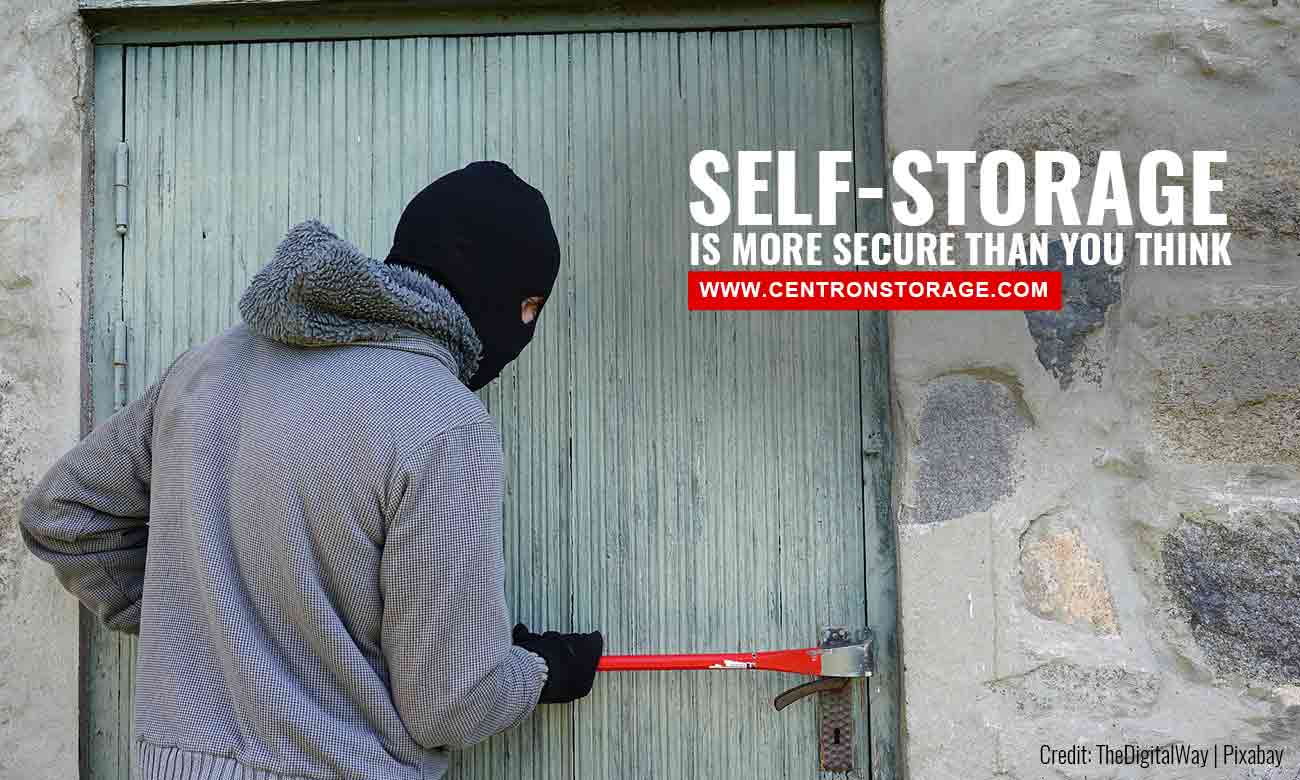12 Items You Should Keep in a Climate-Controlled Storage Unit
Storing your items in a self-storage unit is useful if you want to free up more space in your home, or when you are moving out, or even when you need temporary storage for your stuff. But did you know that there are specific items that are sensitive to temperature changes and may be damaged if you rent a regular storage unit?
A lot can happen to your stuff while it’s sitting in storage. Moisture can build-up, it can be exposed to extreme temperatures, and the most common concern is pests living in your storage unit. How then, can you make sure that your items are in the same condition they were when in when you put them in storage?
A climate-controlled storage unit is the solution. Climate-controlled storage units keep your possessions protected from the elements. While they cost a little more than traditional storage units, the many benefits you get from climate-controlled storage make them worth the added investment.
What Is Climate Controlled Storage?
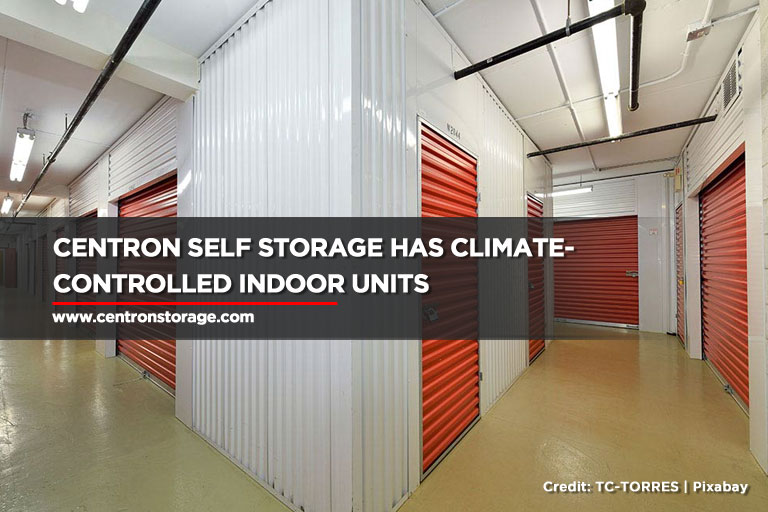
Climate-controlled storage, sometimes referred to as temperature-controlled storage, is a special type of self-storage unit that is designed specifically to maintain steady temperatures and humidity levels. The temperature inside these units is strictly maintained at 55°F to 85°F. Unlike storage units for rent located outdoors, climate-controlled storage units are most often found indoors.
Temperature and humidity are important factors since they work together to create moisture. Humid air is hot air, and where there’s more heat and more humidity, moisture follows. Keeping both the temperature and humidity controlled and steady means that moisture can’t form and your items stay protected.
There are benefits to these maintained temperatures. For items that are sensitive to environmental conditions, or those of great value, the stable temperatures give better protection against damage, which is important especially if you’re storing your items for a long period of time.
You also don’t have to bend over backwards to find a climate-controlled storage unit because most self-storage facilities, especially with interior storage units, offer this now.
Do I Need Climate Controlled Storage?
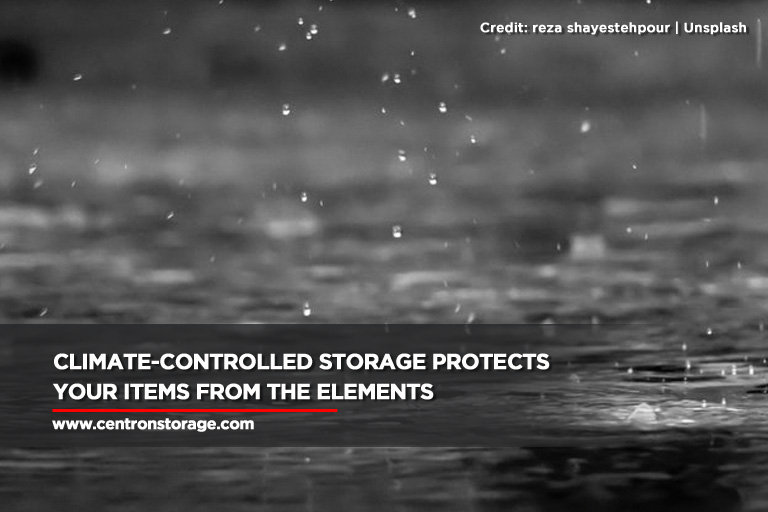
Renting a climate-controlled storage unit can be costly compared to just getting a regular storage unit. If you’re not sure whether you need this feature, here are a few factors you need to consider:
- Length of Storage
You need to consider how long you’re storing your items. If you only need the storage for a short period of time, and you only need it because you’re moving, then you probably don’t need a climate-controlled unit. You just need to make sure that you will be able to get your items in a timely manner since heat, cold, and humidity can eventually damage some of them.
However, if you’re placing your items in storage for a long period of time, climate control is very important. This is applicable for Christmas decorations and winter clothes. People only use it for a short time every year, so keeping them in climate-controlled units for the rest of the year will help them last longer and maintain their quality for a long time.
- Geographical Location
When you are located in a place where you experience extreme temperature conditions, a climate-controlled storage unit is a must.
Places that are prone to extreme heat put items like CDs and vinyl records at risk since they can warp and/or melt. Your wine can also turn cloudy or brown when it is exposed to heat.
You also need climate-controlled storage if you’re in an area that experiences extremely cold temperatures since this can freeze objects that retain moisture. If exposed too long to the cold, these items can crack, expand, and contract unless kept under controlled conditions.
High levels of humidity can also be damaging to many items. Extreme humidity encourages the growth of bacteria, mildew, and mould, and can even attract small pests. With climate-controlled storage, you can make sure that you have a clean and dry space for your items.
- Type of Item
One of the biggest factors when deciding whether to get climate-controlled storage is the type of item you’ll be storing in it. You can get climate-controlled storage units to house objects that are sensitive to temperature and those with sentimental value.
Heirlooms and old photographs can be costly and, in most cases, impossible to replace. That’s why these are best kept in a climate-controlled unit. The same goes for store furniture made of wood, electronics and media, and items made of fabric such as toys, clothes, and upholstered furniture in a climate-controlled storage unit in order to make sure that they are kept in their best condition.
When deciding whether to get climate-controlled storage, here are questions you need to ask about the item:
- Can it get mould or mildew?
- Can it warp, crack, deteriorate, or become discoloured from interactions with moisture?
- Would high heat cause it to expand or contract?
- Is it designed to be stored at a certain temperature (for example, wine or artwork)?
- Is it sensitive to extreme heat or cold?
- Is it rare, sentimental, and/or valuable?
If your answer is yes, then it’s a good idea to rent a climate-controlled storage unit for those items.
What Things Need Climate Controlled Storage?
Here are some items that need to be stored in climate-controlled storage units:

1. Antique Wooden Furniture
Leaving antique wooden furniture exposed to the elements can damage its structure. The humidity and temperature fluctuations can warp, crack or rot the wood. This includes your antique wooden tables, chairs, bed frames, nightstands, and more.
So if you’re planning on storing them for a long time, then consider putting them in a climate-controlled storage unit
2. Leather Furniture
Leather is particularly sensitive to humidity fluctuations and can shrink, warp, thin out, and even get discoloured and mouldy through moisture when placed in regular storage.
If you have expensive leather furniture, it’s crucial that you put them in a climate-controlled storage unit if you’re living in areas where each season brings drastic weather changes.
3. Consumer Electronics
Even small amounts of moisture can short circuit your electronics when you turn them back on after storing them for a long period of time. Rusting can also be an issue.
If you are storing your computer, computer parts, or any other types of electronics equipment, then a climate-controlled storage unit can prevent any moisture buildup.
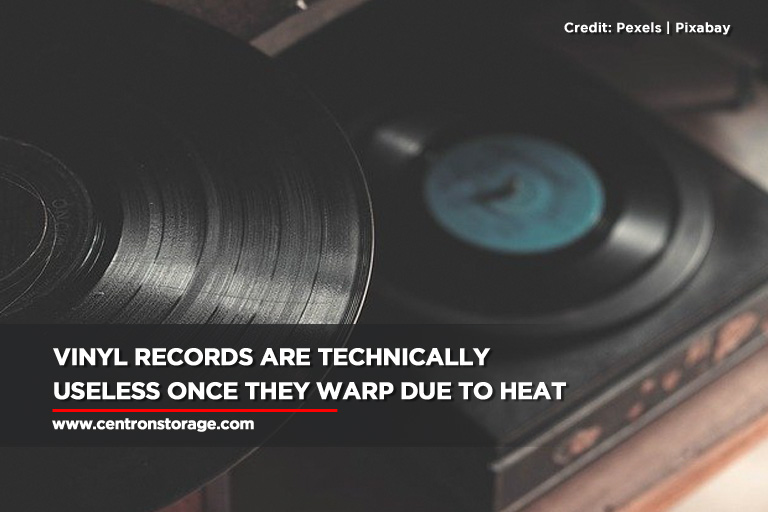
4. Media Storage Equipment
DVDs, CDs, vinyl records, cassettes, software, or any other type of media storage are extremely vulnerable to moisture and major temperature shifts. A climate-controlled storage unit is a must.
5. Clothing
Seasonal clothing can be very expensive. Keeping them in a climate-controlled storage unit can preserve their quality for a longer period of time. This is especially true for heirloom pieces of clothing like wedding gowns and the like.
Before putting your clothes in storage, make sure they are clean and dry. You can also use plastic storage bins for additional protection against moisture.
6. Special Collections
If you have special collections, a climate-controlled storage unit is the best place to store them. Since your purpose of collecting these special items is preserving their quality for many years, they need to be under controlled temperatures. Changing weather conditions can damage them.
Such items include coin collections, stamps, comics, toys, and other collectibles.
7. Important Paperwork
Business documents and inventory, tax files, and other important paperwork should be carefully stored in a climate-controlled storage unit. This prevents those documents from getting dissolved, discoloured, faded, or rotted due to humidity. Monthly self-storage is considerably more cost-effective than replacing your inventory damaged by extreme weather changes.
8. Wine
Exposure to temperature fluctuations can accelerate the wine’s aging process, degrading its taste and quality. As a result, your wine can develop an unpleasantly metallic, oxidized taste. Not only will you not be able to drink it, but you will be wasting the time and money that you invested into your wine collection.
To avoid spoilage and support proper aging, you should consider renting a climate-controlled storage unit for your wine bottles.

9. Musical Instruments
A high-quality musical instrument is a costly investment, so you need to store these delicate items in units with climate control. Otherwise, your musical instruments can be damaged by humidity and temperature fluctuations. On top of that, high levels of humidity and heat can encourage corrosion and the growth of bacteria, which is extremely destructive to musical instruments.
10. Artwork and Craft Supplies
The ideal environment for your artwork should be at 70 to 75 degrees Fahrenheit with around 50% humidity, which you can find in a climate-controlled storage unit. Your craft supplies can also benefit from being stored in a climate-controlled storage unit since the fabric is susceptible to moisture, UV exposure, and dust so keeping them under consistent temperature can be incredibly helpful.
11. Photographs
Climate control is very important when you’re storing photos. Heat can cause stacks of photos to deteriorate and fuse together. This can also cause images to fade. Additionally, you need to face the photos away from each other to prevent damage and ensure that those memories are preserved. They are, after all, irreplaceable.
12. Pharmaceutical and Medical Supplies
Pharmaceutical and medical supplies can degrade when it is stored outside its normal temperature range. Make sure that you check your prescription bottle for storage instructions and you’ll typically see a recommended temperature range.
How Much Does a Climate-Controlled Storage Unit Cost?
Climate-controlled storage units in Ontario go from $40 to $500 depending on the storage unit size and location, and if you’re living in areas where temperature and humidity are not consistent all year, then surely a climate-controlled storage unit is worth the extra price. It is always better to err on the side of caution and keep your items safe.
If you still can’t decide on whether to get a regular storage unit or a climate-controlled storage unit, check the storage unit sizes and prices and see if it is what you are looking for.
“Climate Controlled Storage Near Me”? That’s Us!
Centron Self Storage offers the best value for climate-controlled storage spaces in North York. Pay a visit to our store at 4500 Chesswood Drive and get a feel of how secure and safe your belongings will be in our facilities. Call (647) 749-1398 to talk to one of our storage experts today!
How Renting Self-Storage Saves You Money When Moving Provinces
Let’s face it: moving out can be daunting, especially when you’re headed somewhere out of your province. There’s an awful lot of work to do, and even the planning stages can be quite daunting, not to mention financially challenging.
You, however, have tons of options to ease up your moving experience. One of the most effective solutions is using a self-storage facility. Renting a storage unit comes in handy when you need a safe place to store your belongings while you search for a new home or while you finalize the papers for your new place.
There are other benefits to using self-storage that ultimately save you time, energy, AND money when moving out of the province.
1. Temporary Storage That’s Readily Available
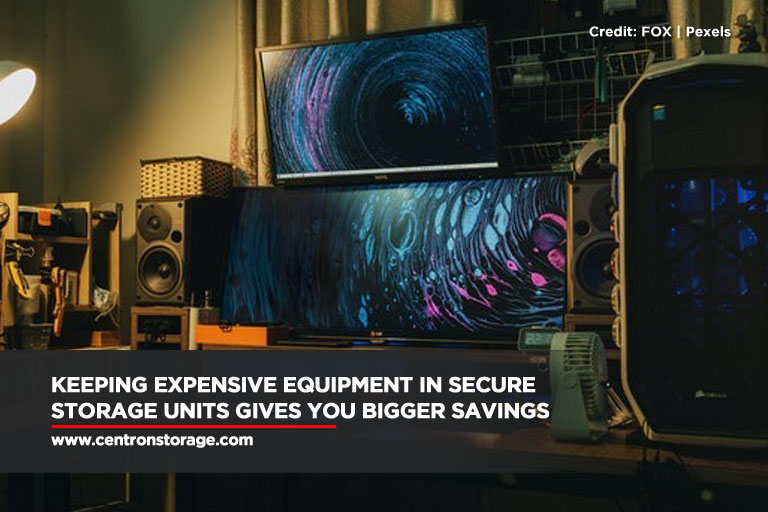
Moving out compels you to do an overhaul on your list of possessions. You will likely not have to bring everything to your new home. However, if there are items that you are certain you cannot give up, and there’s nowhere to put them in just yet, a storage unit strategically located between your old and new addresses might just be right for you.
It helps to remember that you can rent self-storage to store, for the time being, appliances, furniture, seasonal clothing, and other expensive items that you cannot afford to leave behind. Compared to the costs of buying all those items brand new, the cost of renting a storage unit will offer much higher savings. Self-storage is the way to go, especially if you’re moving from one province to another.
2. Free Amenities
Self-storage facilities know that clients who are moving out have specific needs. They ease your moving experience by providing additional services on top of the storage unit:
- Logistics – Some facilities provide free moving trucks, and assist you when you’re loading and unloading your items. When you don’t have extra cash, your self-storage provider can help you with your logistical needs: whether it be placing your belongings in the storage unit or taking them to your new home.
- Safety and Convenience – When your facility offers logistical freebies, it follows that they would offer amenities. These include dollies for lifting and moving heavy objects, and pads to protect your furniture from dents and scratches when packing or unloading.
- Temporary Mailing Address – If you’re still in the process of packing and moving and you have regular packages or deliveries arriving, your self-storage facility can accept them on your behalf and place them in your storage unit. You can also ship items to the storage facility, while you’re still on the go. Retrieve them later once you’ve settled in your new address.
3. Security and Safety
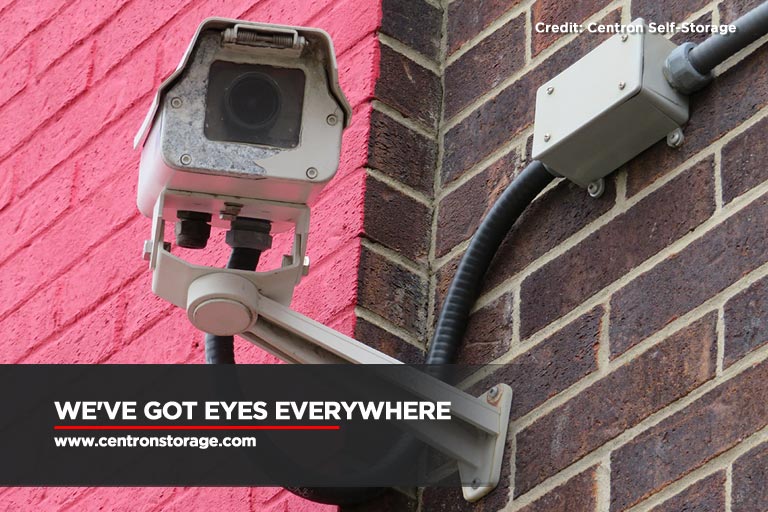
Self-storage facilities are protected with 24/7 surveillance systems to make sure that you won’t worry about getting their things stolen or destroyed. Some are even insured, so when things go south, you still get a certain amount of money despite the loss incurred by an untoward incident. There are also climate-controlled self-storage units that prove to be helpful for regulating temperatures — especially with the Canadian climate conditions.
4. Long-Term Reliability
Most storage facilities allow unlimited period rentals. They even give discounts when you get a long-term contract. Some offer free trial periods on selected self-storage units. If your new place proves to be too small for all of your belongings, renting a storage unit seems like the more viable choice over finding a bigger, more expensive place where all of them can fit.
I’m Moving out on a Budget. Any Helpful Tips?
If you’re strapped on cash but need to move out soon, you can save money by doing the following:
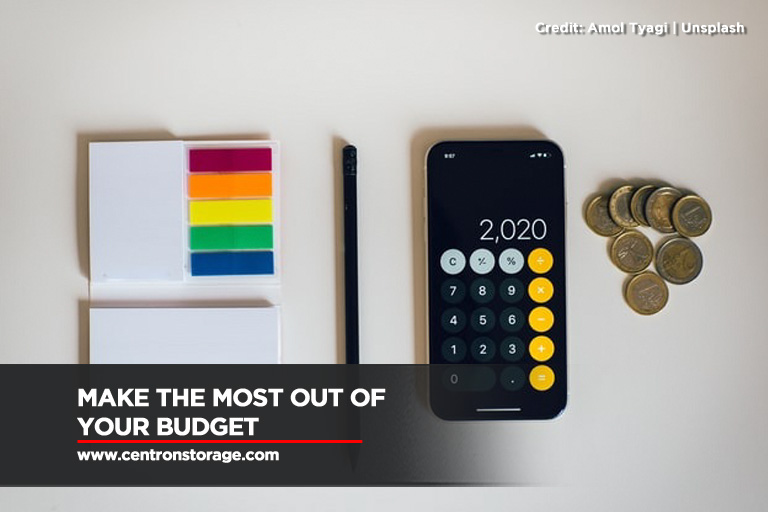
- Compare storage costs. Are you giving away most of your items or keeping them for later use? You certainly need to find a storage unit for rent if you’re taking them along with you. You can pay for the unit on a monthly basis and for a small fee. To save more, find a facility that’s strategically located between your old and new place so you don’t have to spend too much money on gas for long trips back and forth.
- Declutter. Knowing what’s important to you and what you can freely give away helps ease the moving out stress. There may also be items that you can sell for a cheaper price.
- Utilize existing household items for storage. Got plastic storage tubs, washing baskets, bags, and suitcases? You can use all of them as temporary storage hubs for your clothes, books, and other smaller, storable items.
If you’ve got drawers and are planning to take them along on your move, you don’t have to haul out everything that’s inside. Instead, keep them where they are, and cover the drawers with plastic cling wrap for security. Instead of buying bubble wrap, you can cushion fragile objects with linen and cloth.
You can also make do with garbage bags. They’re cheaper, and if you want to save the environment, you can always choose the biodegradable ones.
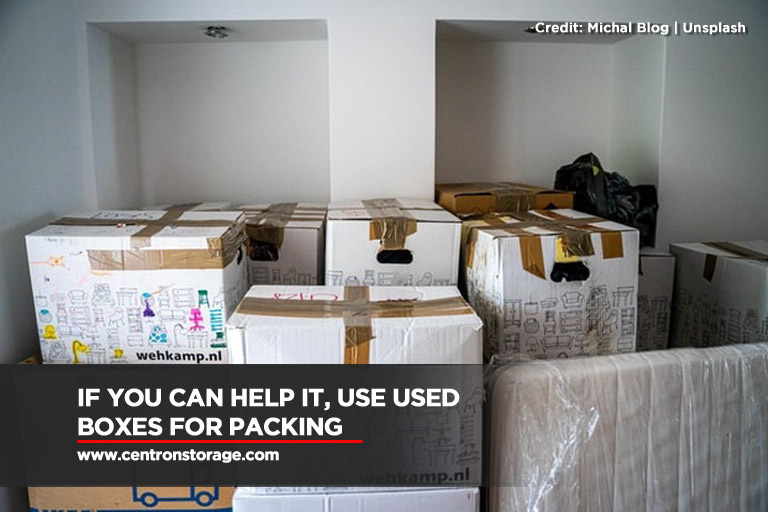
4.Don’t buy boxes. If you want to do it the traditional way (i.e. using boxes for storage), you can always find used boxes in your office. Ask colleagues to save boxes for you, before packing day, so you’re ready to get to work. Supermarkets, large outlet stores, sports and electronics stores, and garage sales are also good places to check out for boxes that are no longer of use. Some self-storage facilities also offer boxes as free amenities.
Crowdsource your social media for friends and mutuals who might have also moved in the past and have extra boxes lying around their homes. People are always happy to free up their spaces, while lending a hand to their friend. Imagine how much box money you can save!
5.Visit the discount store. Permanent markers and packaging tape look inexpensive per unit, but when you need a bunch for packing and moving, the total bill could shock you and your wallet. You can buy packing supplies such as colour coding stickers, labels, and storage items for a loonie or less at discount stores. If you’re buying ahead and have time to wait, you can order online from Dollarama, The Great Canadian Dollar Store, and Dollar Tree Canada.
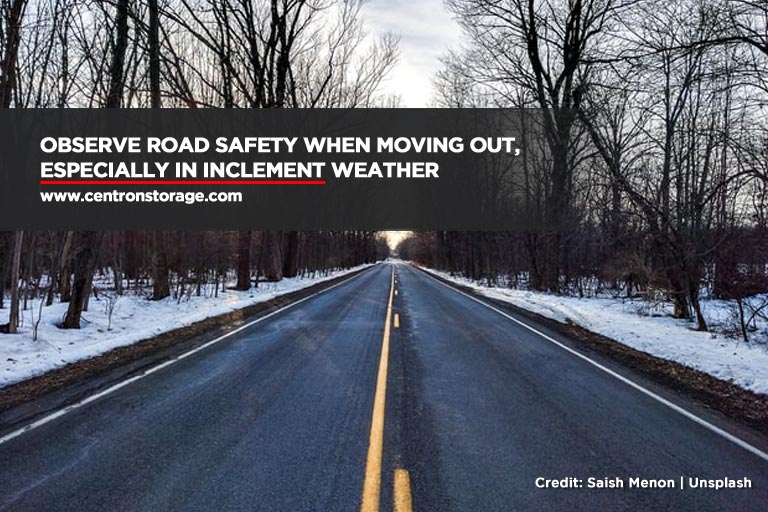
6.Move during off-season. Summertime seems like the ideal season for moving. The weather is generally friendlier, and you don’t have to worry about muddy puddles and slipping on ice. But if you can manage, try moving off-season.
-
- With most people moving during the warmer months, movers and storage facilities actually have promos during off-season. They have a more flexible schedule during autumn and winter, with less bookings. When there are fewer people planning to move, you might end up choosing the exact date you want your belongings to be picked up.
This gives you a chance to source the best deals and even try your hand at negotiating a lower rate. After all, this time of year, logistics and storage providers are actively looking for business.
-
- Avoiding peak moving season means avoiding heavy vacation traffic. This includes moving trucks. Because there are less people moving during autumn or winter, you won’t have to compete for space on the road at weigh stations and even truck stops, which may cause unplanned delays. It’s a smoother schedule for the move, and less gas expense.
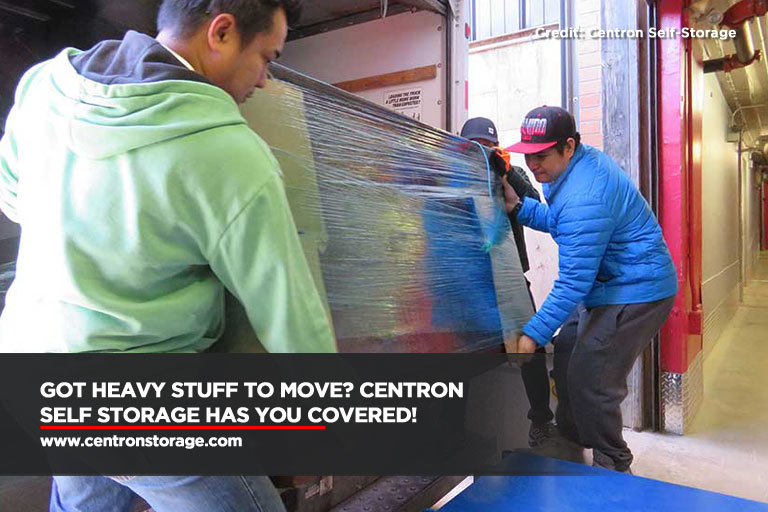
Moving In or Out of North York?
Centron Self-Storage offers comprehensive storage solutions to keep your prized possessions in good condition. Let us free you from the stresses of moving into your new home. Call (647) 749-1396 to rent, reserve, or inquire for rates!
Self-Storage for the Self-Employed
If you run your own business — pandemic or no — chances are you’re looking to maximize your productivity and reduce your expenses. For the self-employed, renting an office or retail space will allow you to do just that.
Renting self-storage units is a viable solution for self-employed people who don’t have enough space in their own homes, or need to work outside most of the time. If you’re planning on starting your own small business, or are looking for ways to save money, read how self-storage can help you run your business smoothly.
Safely Store Your Goods and Inventory
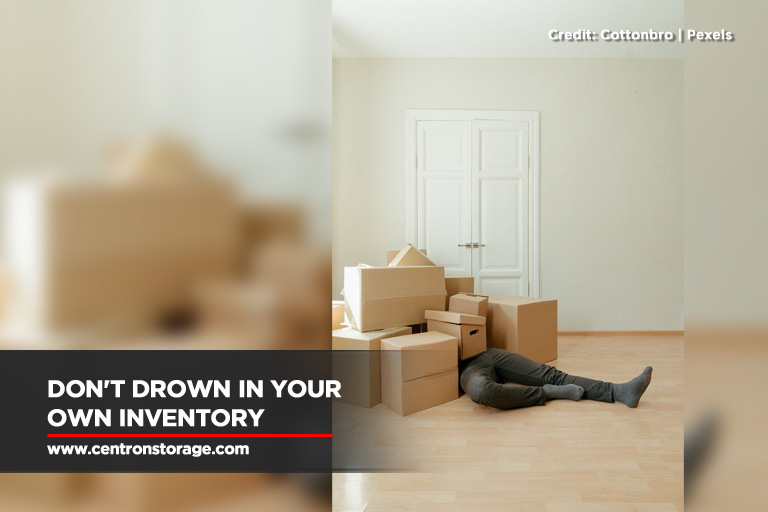
For the self-employed, the question of storing your supplies and products in your home can be quite daunting. Do you have enough space to begin with? Will you be sleeping right next to all these boxes? Are the products safe from the kids and pets, or vice versa?
Space constraints at home are a major issue that most small business owners, especially those living in modest-sized spaces, cannot take lightly.
Every business has the option to store all their extra goods, seasonal items, supplies, and inventory into self-storage units. When the demand for your goods goes high, having spare storage space separate from your bedroom or basement will spare you from the hassle of trying not to topple down stacks of boxes that contain precious income-generating cargo. By placing all the extra items in a separate storage unit, you can avoid cluttering your own home.
If you operate your own small shop in town, renting a self-storage unit is a reasonable alternative to expanding your retail space. Warehouse storage is understandably too big and too costly for a self-employed business owner with limited stocks, so that’s out of the question. However, your business is still worth something. Getting yourself a self-storage unit with 24/7 video surveillance, exterior and interior lighting, heavy-duty fences, and electronic gate controls ensures that your business assets are stored safely and securely.
Protect Your Paperwork
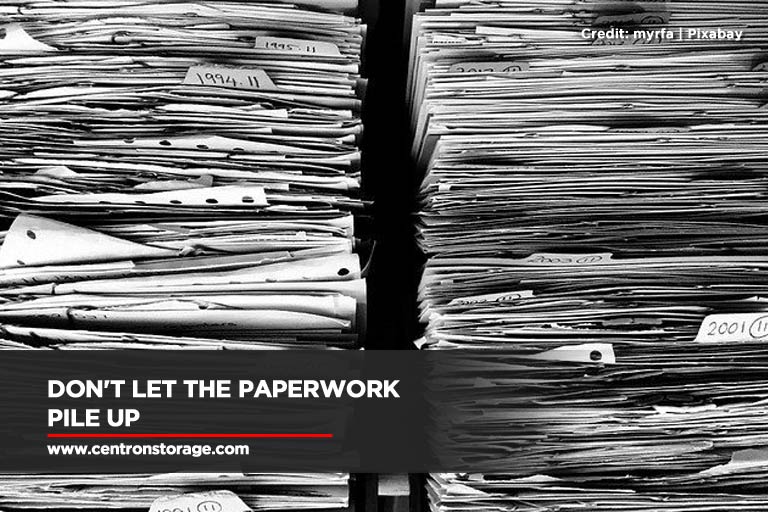
Never risk ruining important client files, transactions, and business reports. Every piece of paperwork you accumulate is crucial to the well-being of your business, and losing or destroying them may be detrimental in the long run. If you feel your home isn’t equipped to keep your paperwork safe, rent a self-storage unit.
Self-storage units are perfect for storing such important documents and archives. Besides the security features of these units, the climate control feature most providers offer also keeps them in excellent condition, protecting your client orders, business records, fliers, and contracts from humidity, pests, water, and temperature damage.
Sales professionals, lawyers, authors, and other self-employed people whose jobs rely heavily on paperwork will benefit from getting a self-storage unit for themselves. Compared to office spaces with longer rental terms, self-storage providers can offer shorter rental periods for lower costs on the renter’s part.
Great for Freelance Creatives

Just like other self-employed business owners, some freelance creatives find it a challenge to bunk up in their living space with tons of tools and materials lying around. Crafters, artisans, and painters might be used to having piles of clay, chisel statues, or paint canvases at home, but when the demand for commissioned work increases, it’s high time to look for a self-storage unit for rent that’s not too tight for your budget.
Arts and crafts materials are a tremendous investment, too. The more expensive the material, the more care and maintenance it needs from the creative hand that wields it. Self-storage units are a good way of preserving the usefulness of these materials. With climate control features, self-storage protects the painter’s paints, the sculptor’s clays, or the musician’s gear from the dangers of temperature changes, humidity, and moisture.
Service Contractors
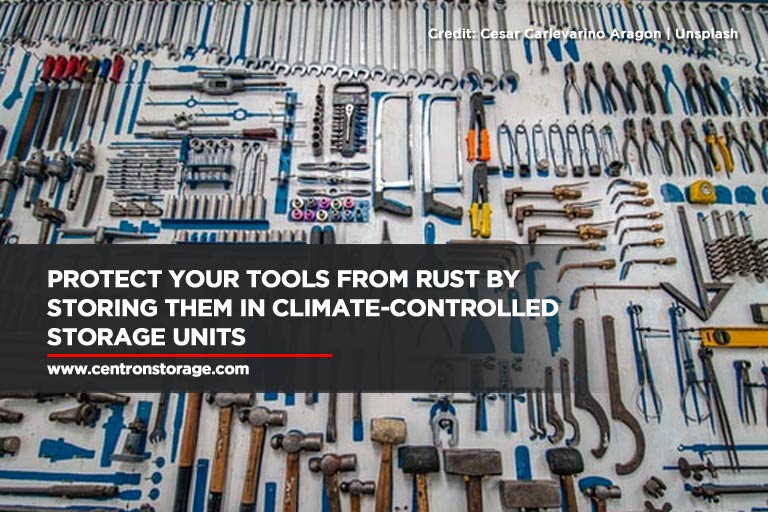
Self-employed service contractors work out of their own homes, and go from address to address within a city. Some even work out of town, especially if their services are well-recommended and in demand.
If you’re a carpenter, plumber, electrician, cleaner, or any service contractor, you might start acquiring more tools and equipment to better your performance at your job. With a self-storage unit, you can stop driving around with all your equipment and paperwork in tow. Storing your equipment at home can also be a risk hazard, especially if there are very young children at home.
For service contractors who have a considerable number of clients in neighbouring cities and towns, consider renting a self-storage unit for your equipment in the area. Don’t keep your equipment in your car; doing so may attract unwanted attention from thieves. Renting multiple units across different locations makes it convenient for you to access your tools in different locations.
Accessible Temporary Storage
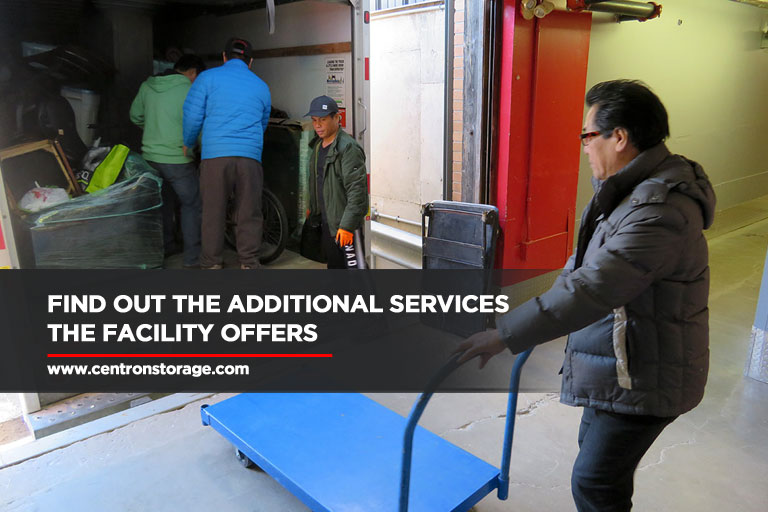
In the wake of the pandemic, small businesses were among the hardest hit sectors. Many, unfortunately, had to close up shop either temporarily or permanently. Some young self-employed business owners who were forced to shut down for good had to go back home to recover financially with the help of family.
If you’ve ceased operations for the time being or are relocating, opt for a self-storage unit to store your items until you get your shop back up and running. If you’ve ceased operations for good, a self-storage unit is also a great option for housing used equipment and tools you intend to resell. Storage facilities offer various room sizes that can accommodate your storage needs.
Whether you’re just storing boxes of unused supplies or your whole business in there, self-storage can free you from the stress of keeping your items safe while you think about the next steps to take for your business.
The biggest takeaway for the self-employed is how much money you can save up for other more important business expenses by renting storage space. Take advantage of the various offers of such facilities to get back up on your feet. You can select the right size unit for your belongings, access them any time, and get additional services from the facility at reasonable rates.
If you’re looking for self-storage units near you, Centron Self Storage offers a wide range of storage solutions for your business needs. We give you the best value for your money. Call us at (647) 557-7378 for inquiries.
Spring Cleaning Tips for Your Home: 2021 Edition
It’s April: the sun is up, the flowers, abloom. It feels like there is no better time to open up to the world to get something done after those long dreary winter nights. This seems to be why springtime is the perfect time for most of us to do house-wide decluttering, cleaning, and reorganizing.
With more time at home compelling us to pay attention to the dirty nooks and crannies we haven’t noticed before, there’s no reason not to get right down to it. Feeling the urge to pick up a broom or the vacuum cleaner yet? Start your spring cleaning at home right with these ideas and make this seemingly tedious work seem more palatable.
Make a Checklist
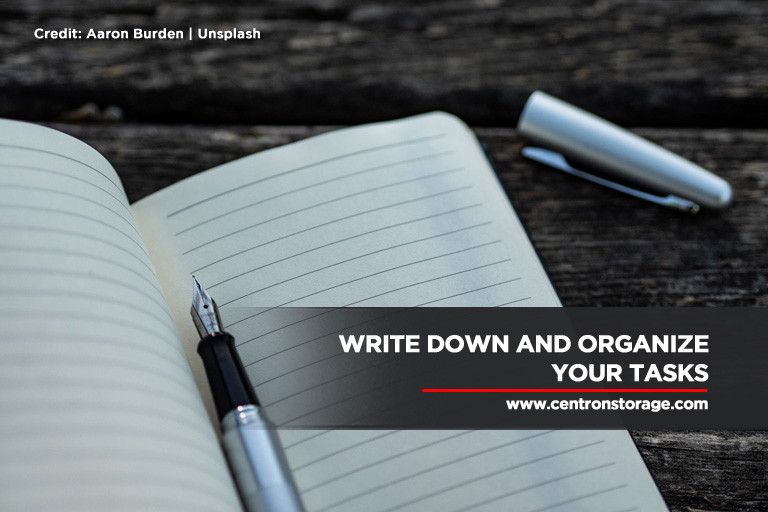
As with any laborious home task, the key to efficient spring cleaning is preparation. You need to know what needs to be done. A week or two before the actual cleaning, prepare a spring cleaning checklist.
- General
- Dust and clean windows and surfaces
- Sweep and mop the floors
- Vacuum rugs and/or carpets
- Water your plants
- Take out items for recycling
- Dispose of junk mail, free samples, and other items no longer of use
- Declutter
- Kitchen and dining area
- Clean heavy-duty appliances like the stove, microwave, refrigerator (including the freezer), and
- utensil organizers
- Organize the pantry by sorting out pots, pans, drawers, cabinets, etc.
- Choose items that you can give away
- Descale the coffee machine
- Check if knives and scissors are still functional
- Living room
- Dust and disinfect (or wash) the coffee table
- Clean the entertainment system (using products safe for electronics)
- Fluff or wash throw pillows and/or pillowcases
- Check the sofa if it needs upholstering (leather), or deep cleaning (other material)
- Organize CDs, DVDs, video games, and other entertainment system items
- Declutter the bookshelves, and organize remaining books and other reading materials
- Bathroom and laundry area
- Deep clean the showerhead, toilet, sink, and bathtub using strong cleaning product
- Check for damages on the bathroom floor, bathtub, sink, and other areas
- Get rid of empty bottles and containers, and expired/unused beauty products
- Organize the medicine cabinet
- Replace short-term items like toothbrushes, shaving razors, and shower caps
- Check if your shower liner or curtain needs replacement
- Take out used clothing or towels left by other family members
- Bedrooms and Closets
- Declutter dressers, wardrobes, closets
- Throw out clothes that have been worn down, and are unusable
- Organize clothes by colour, by fabric, or any way you are comfortable with
- Check for insects living in corners, and dust and clean away
- Wash the beddings
- Replace dirty sheets, pillowcases
- Garage and Car
- Declutter, and set aside items you can sell, give away, or throw away
- Reorganize the space inside so you can move around better
- Rearrange tools and equipment
- Check if your overhead doors are rusty, and grease if they are
- Check if the car interior smells, or has dirty spots
- Throw out any garbage inside
- Check for damages in the windows, wipers, tires, and other peripherals
- Wash the car, deep clean the windows, windshield, and wipers
- Vacuum the seats and the floor
- Replace car floor mats, if necessary
- If you can’t wash the car yourself, take it to your local car wash
- Schedule an oil change, safety inspection, or tire replacement
- The Outside
- Check your lawn and your roof to see what needs cleaning, repairs, or replacement
- Cut the grass, or prune the trees, if you have any
- Rake the leaves, and throw away broken branches
- Pick up any trash
- Clean the gutters
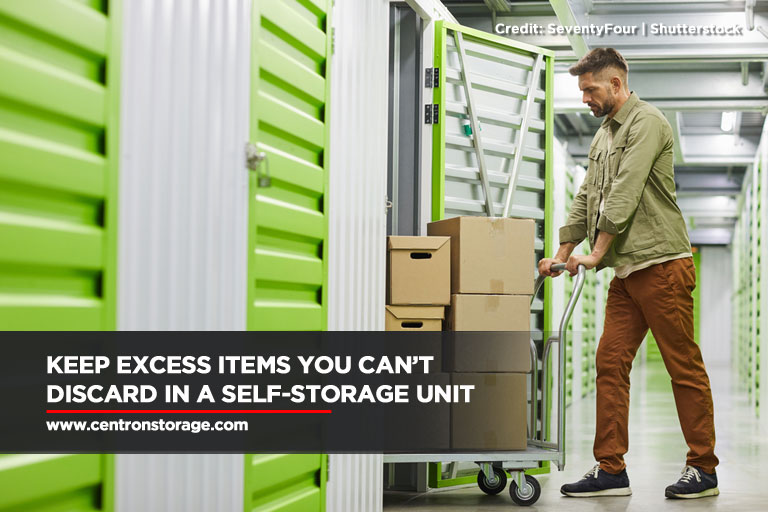
An additional tip: Decluttering can be difficult, especially if certain objects have sentimental value. However, you don’t have to get rid of them for good. Renting a self-storage unit will allow you to hold on to these items while clearing up space in your home. Entrust these precious objects to a reliable self-storage company to keep them well-preserved.
Checkpoint: Cleaning Supplies and Equipment
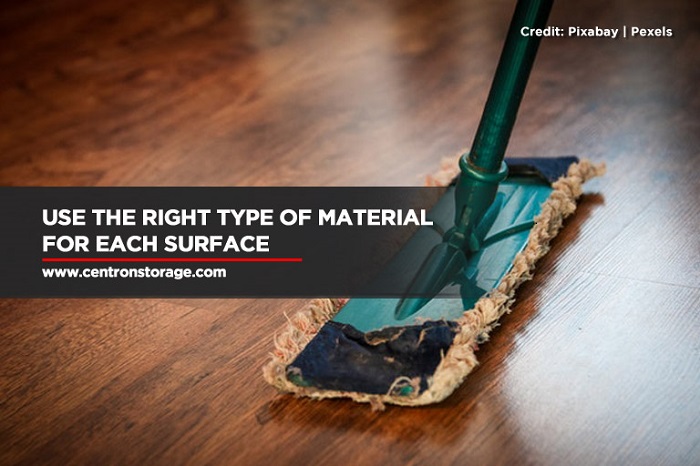
What even is cleaning without the cleaning materials? Along with your task schedule, don’t forget to sort out all that you need for cleaning and organizing your house. Household Management 101 suggests this ultimate home cleaning checklist:
- Equipment – Check if these are available, or if you need to purchase a new one:
- Dust mop and wet mop
- Dust cloths and dusters
- Rags, towels and soft cloths
- Indoor and outdoor brooms, and a dustpan
- Vacuum
- Toilet brush and brush caddy
- Plunger
- Spray and squirt bottles
- Squeegee and sponges
- Scraper, scrub brush, and toothbrush (for harder to reach surfaces)
- Buckets
- Cleaning apron, rubber gloves, and other protective equipment
- Cleaning caddy
- Cleaning Products – Check if you need a refill, or if your stocks have expired:
- Cleaners (all-purpose, disinfectant, glass, abrasive)
- Mild detergent
- Household ammonia
- White vinegar
- Baking soda
- Chlorine bleach
- Metal and furniture polishes
- Spot carpet cleaner
What It Means to SANITIZE in this Pandemic

The new coronavirus can stay on a surface from 24 hours to a full week, depending on what the surface is made of. Your house has a number of high-touch areas (like the kitchen) and objects (like tables, countertops, doorknobs, light switches, handles, handrails, and your personal electronic devices). Pay more attention to the level of cleaning you do on these surfaces, so you can protect yourself and your family from possibly getting infected.
- Before buying your disinfectants, check whether your go-to brands can help prevent the spread of COVID-19. Health Canada assigns an 8-digit Drug Identification Number to products that are approved safe for use in the country.
- Before using any product, read and follow the usage instructions carefully. The efficacy of some products relies on contact time. When spraying and bleaching, make sure the area is well-ventilated. Cover up with a mask and gloves.
- Use a damp rag or mop when deep cleaning. Sweep or dust gently to prevent the distribution of virus droplets in the air.
- Place all used items (like wet mop heads, cloths, and disposable gloves) in a separate trash bag before putting it in the regular waste bin. Wash all reusable cleaning items with laundry soap and hot water. Keep the washed items out of reach after drying. Do not reuse gloves.
- Wash your hands thoroughly after cleaning. Use soap and water.
- Clean and disinfect more than usual. Provide disinfecting wipes to family members, or visitors (service providers, and neighbours), and have them observe proper disinfecting on the aforementioned high touch areas in the household.
Never Forget These Safety Procedures
- Avoid wet floors, and mop up as often as needed. Don’t let the kids near wet surfaces.
- If you’re using a step stool, make sure you plant it on a level surface to avoid accidents. Set the stool as close as possible to your target area so you won’t need to move around too much, or stretch too far.
- Be careful when lifting heavy objects, or moving furniture. Ask for assistance if you know you can’t do it by yourself. Prevent injuries by bending with your knees (not your back), and using your leg muscles.
- Replace your mask and gloves after one task is over.
Have Fun!
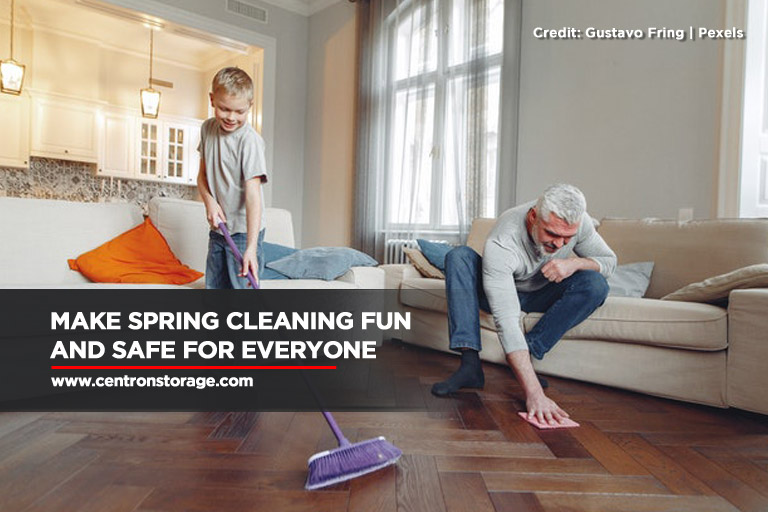
One more important spring cleaning tip: make it a fun and exciting activity! Make it a family thing, or invite a friend over to help you with your tasks. You can put on some music, and hum along. Reward yourselves with a nice meal and drink afterwards. Find a way to make your spring cleaning worthwhile.
Got Extra Stuff in Storage Limbo?
We know you have lots of things you don’t want to throw away just yet. If you’ve done your spring cleaning, and brought out a considerable amount of “Can I keep this” clutter, we might have storage space for you! Call Centron Self Storage at (647) 749-1397, and get your first four weeks for free!
7 Ways To Store Your Snowboards and Skis
If you’re the type of person who loves to stay active in the winter, then you’ve probably seen your fair share of action down those snow-covered slopes. After all, nothing beats the thrill and excitement of snowboarding or skiing during the wintertime.
With the last vestiges of winter melting away, it’s time to pack up and put your skis and snowboards back into storage. However, you have to store these types of equipment properly. Otherwise, they will deteriorate and become unusable.
If you want to make sure that your snowboards and skis are in top shape for the next winter, you need to know how to store them properly. To help you get started, here are effective snowboard and ski storage ideas.
How Do You Store Snowboards and Skis Off-Season?
Storing your snowboards and skis for the off-season will require proper preparation and planning since they’re going to remain untouched for quite a long time. Throwing them into a shed somewhere and calling it a day isn’t going to cut it if your end goal is to keep these pieces of equipment in excellent condition.
1.Check Your Snowboards and Skis for Damage
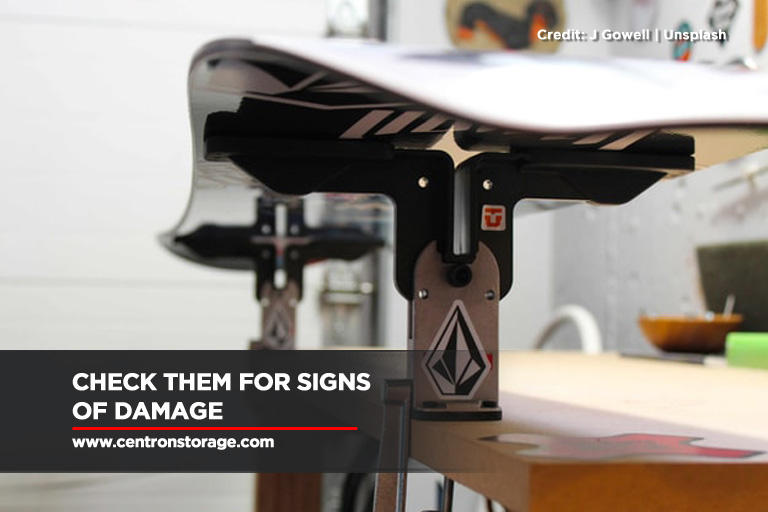
Going down those icy slopes is exhilarating at high speeds. However, if your skis and snowboards are damaged, not only will it affect performance, but might be a safety hazard and will put your life at risk. So before you put your winter sports equipment into storage, the best thing to do is to check for damage and, if possible, do some repairs.
Here’s what to do:
- Check your snowboards and skis for little cracks and chips on the sidewall and top sheet. This allows water to seep into the wood core of your equipment and results in a loss in stiffness and flex.
- Get rid of the remaining water and apply epoxy resin on the damaged areas of your skis.
- Use a metal scraper or sharp knife to and gently scrape the glue from the edges.
- Sharpen the edges and remove obvious burrs. This will reduce the chances of the edges rusting during storage.
- If there are signs of rust, use a gummy stone, Scotch Brite pad, or medium steel wool to gently remove rust.
- If the damage on your gear is extensive, bring it to the shop and have a professional take a look at them.
- If repairs are impossible, then better to opt for a replacement.
2.Clean Your Skis and Snowboards
After using your skis and snowboards down those slopes, dirt, salt, mud and other bits of debris might have latched onto your gear. The first thing you need to do is clean these substances off your equipment.
Cleaning your skis and snowboards before storage is an essential step since:
- Removing harmful substances, such as salt, from your snowboards and skis will prevent corrosion and structural damage.
- Cleaning will keep your winter sporting gear from being a breeding ground for harmful bacteria.
- Clean snowboards and skis are easier to check for signs of wear and tear.
When cleaning your snowboards and skis, you need to pay attention to a couple of things to make it effective and prevent damaging your equipment:
- Use a garden hose and spray water on your equipment thoroughly. However, avoid forcing water into the bindings as much as possible.
- Do not use detergent or degreasers because they could negatively affect the lubricant on the bindings.
- For grease or spring pollen build-up that has gotten stuck on the base, use a piece of cloth dipped in a small amount of citrus solvent.
3.Apply Storage Wax
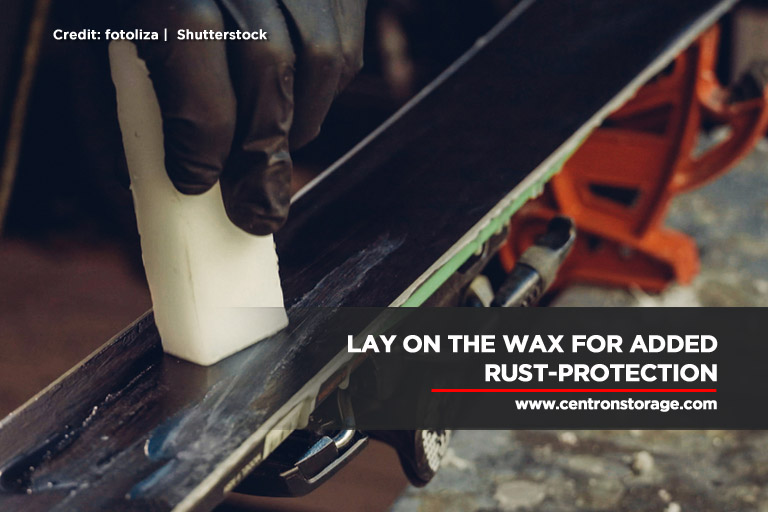
Waxing is one of the most important things in preparing your snowboards and skis for storage. Storage wax protects the bases from oxidation, moisture, dirt, and prevents the build-up of rust during storage.
When applying wax on your snowboards and skis, make sure to do the following:
- Don’t scrape off the residual wax from before. This adds an extra layer of protective coating.
- Make sure to apply a generous amount of wax all over the base using a waxing iron at low heat.
- Use warm weather or all-temperature wax if you can.
- Cover the edges with was to keep them from rusting.
4.Look for a Good Storage Location.
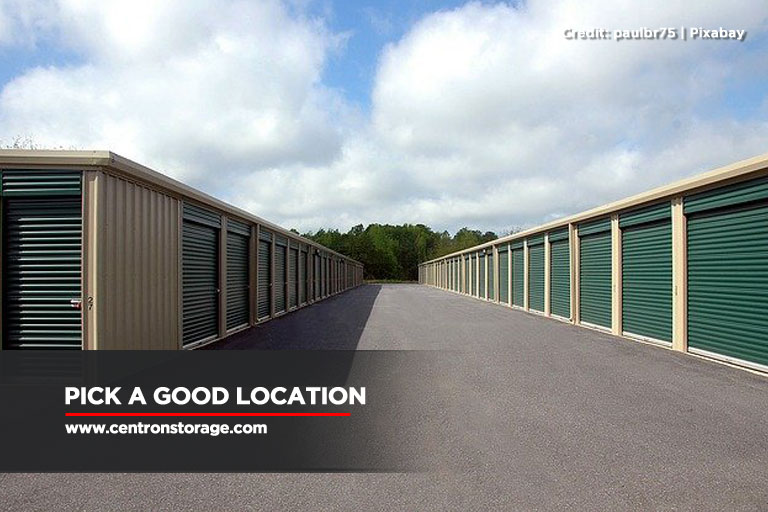
Your storage location matters in terms of keeping your snowboards and skis in perfect condition during the long idle period. Store them in an area that is not prone to super high or super low humidity since both can cause adverse effects on your winter sporting equipment.
In low humidity areas, here are the effects on snowboards and skis:
- Low humidity can lead to delamination of your skis by heating up the glue that binds all the layers of the gear together.
- Low humidity can cause the equipment to dry out and become stiff.
- Low humidity can make the interior of the board lose its shape.
In areas with high humidity, the effects are as follows:
- High humidity can encourage mould and mildew to grow on your skis and snowboards.
- High humidity can cause the edges to corrode and rust.
Find an indoor area that is cool and dry, preferably those with temperature and climate control, for the ideal snowboard and ski off-season storage.
Here are recommendations on where to store your gear for the off-season:
- The bedroom
- The coat closet
- Under your bed
- On the living room wall
- A self-storage unit
5.Wrap Your Equipment
You may have cleaned and waxed your winter sports equipment and found a suitable storage location, but your snowboard and skis are still susceptible to harmful elements including:
- Dust
- Insect infestation
- Scratches
- Accidental spills
Wrapping them in a plastic wrap or keeping them inside specifically made ski or snowboard bags can add an extra layer of protection for the long storage period.
6.Store Your Snowboards in the Proper Position
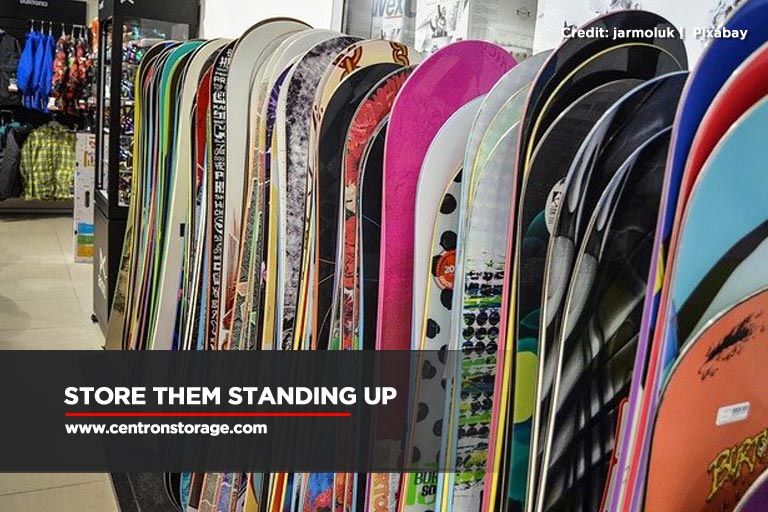
For snowboards, storing them lying down on a hard surface over a long period of time can have adverse effects, especially when something is placed on top of them. It can put pressure on the camber or rocker sections and can result in them flattening out.
To avoid this, a great snowboard storage idea is to store your snowboard in the right position. Here’s how to do so:
- Store your snowboard standing up on its tail.
- Lay them down on a carpeted area.
- Hang them on a skateboard rack on your wall.
7.Strap Your Skis Together
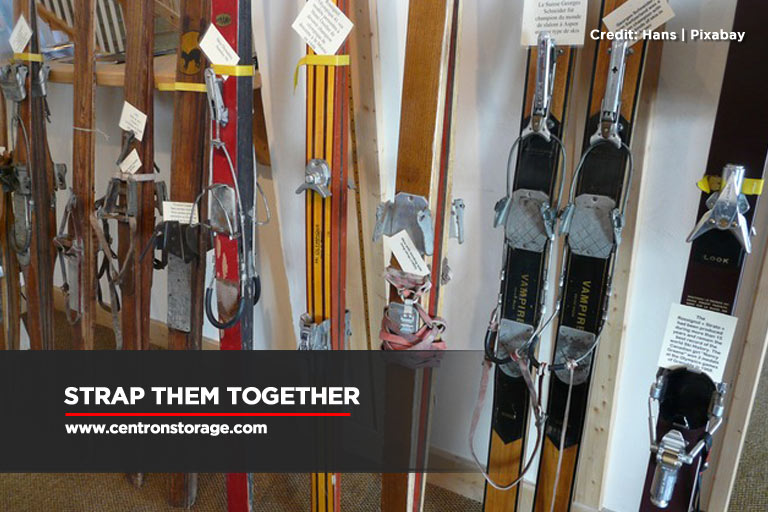
Skis can accidentally bend out of shape if you don’t store them the right way. An excellent ski storage idea to sidestep the problem is strapping them together — but not too tightly.
After that, you need to store them in the correct position that doesn’t place any strain on them. Here are the ways to do it:
- Lean your skis on other objects
- Hang your skis on a skateboard rack
- Lay your skis on their sides on the ground.
It’s going to be a while until the next snowfall, so your skis and snowboards will be left unused for months on end. By following these effective snowboard and ski storage ideas, you will be able to keep your equipment in perfect condition for the next winter activity.
If you’re looking for an excellent storage solution for snowboards and skis in the North York area, contact Centron Self Storage at (647) 749-1396. We offer great deals and will be happy to provide you with the best service possible.
9 Effective Ways Prepare Your Snowmobile for Off-Season Storage
Wintertime is coming to an end, along with it the usefulness of various winter-related equipment like your skis, sleds, and snowmobile.
However, while storing some of these items may be simple and straightforward, placing your snowmobile in storage during the off-season may require more time and consideration. It’s a complex machine with moving parts, electronics, and other components that don’t do well when idle for a long period of time. Carelessly storing your snowmobile will just cause more harm to the vehicle than good.
To prevent any damage, know what you need to do to get it ready for its long nap until the next winter season.
How to Prepare Your Snowmobile for Storage
There are quite a number of things to be done to have your snowmobile prepared for. The main goals for the preparations you’re about to make are to make sure that important components stay functional and prevent moving parts from getting stuck due to corrosion over the long storage period.
1.Clean Your Snowmobile Before Storing it

Your snowmobile has seen its fair share of action over the winter. While driving your vehicle over the snowy terrain, bits of dirt, mud, and other bits of debris has gotten stuck onto the machine’s exterior and exposed parts like the suspensions, springs, skis, and the track.
The first thing you should need to do before hauling your snowmobile off to a garage or storage unit is to clean it first. Cleaning your machine is essential for a number of reasons such as:
- Cleaning your snowmobile can prevent abrasion and corrosion damage from harmful elements such as salt to the vehicle’s structure and parts.
- Removing debris such as rocks, and dirt build-up will ensure that moving parts such as gears and tracks can still function smoothly the next winter.
- A clean snowmobile is easier to inspect for signs of wear and tear.
- Cleaning helps reduce the breeding grounds for harmful bacteria.
When cleaning your snowmobile, here are important things to remember:
- Use warm, soapy water on the hood, tunnel, seat and nose pan and rinse it thoroughly. Make sure all the mud and debris are totally removed.
- Spray grease-cutting cleaner under the hood.
- Spray engine degreaser near the oil reservoir and exhaust ports. Rinse well after.
- Polish your snowmobile with the recommended wax.
2.Apply Rust Prevention Measures
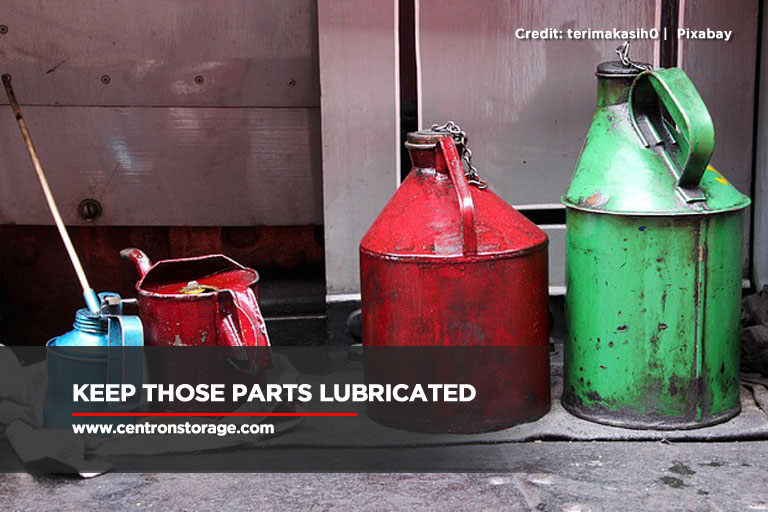
After cleaning your vehicle, the next step in the snowmobile storage preparation plan is to employ rust prevention measures. Condensation cause parts to deteriorate during the long, idle period and they can compromise your machine.
Taking preventive measures against rusting is key to ensure optimal performance and functionality. Here’s what you have to do:
- Apply the recommended type of grease to any area where fittings exist.
- Check nuts, bolts, suspension rails, and other parts for any signs of rusting and have them replaced.
- Spray lightweight oil such as WD-40 on all-bare metal surfaces.
3.Maintain the Fuel System

Before putting your snowmobile to sleep, one of the most important tasks you have to perform is to keep the fuel system properly maintained. One thing that you have to remember is to never store your snowmobile with its tank empty. This is essential because of the following reasons:
- Storing a snowmobile with the fuel tanks empty can cause the seals and the gas gauge to float to dry out and become damaged.
- A snowmobile’s engine parts rely on fuel for lubrication and protection, especially when not in use.
- Emptying the tank is only applicable to older models that use a carburetor system.
To ensure that your snowmobile’s fuel system isn’t compromised during storage, make sure to fill the tank. There some things to take note of:
- Make sure to add a fuel stabilizer to prevent gasoline solvents from breaking down and causing corrosion in the carburettor.
- Run the engine for a short time before storing your vehicle.
4.Make Sure to Remove the Battery and Drive Belt Before Storage
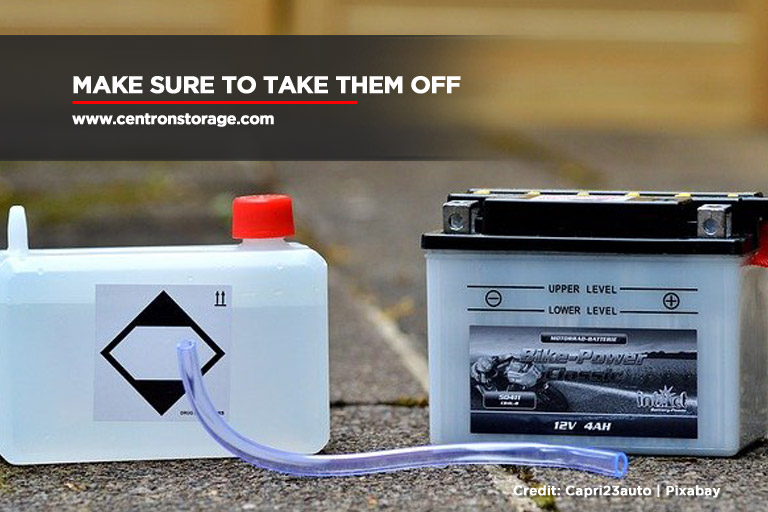
Do not store your snowmobile with the battery still attached. Take out the battery and store it in a cool dry place away from sunlight or, if possible, a temperature-controlled area. Furthermore, make sure to charge the battery once a month using a small charger.
In addition to the battery, make sure to remove the drive belt from your snowmobile. There are important reasons for doing so, such as:
- Removing the belt will keep it from settling to its installed shape. If you don’t, this might prevent it from rotating properly the next time you use it.
- Taking the belt out reduces the risk of condensation building up between it and the clutch.
5.Fog the Engine If Necessary
One way to prevent moisture from damaging your snowmobile engine while in storage is to do fogging. This process involves coating your machine’s crankshaft bearings, connecting rods and other engine parts with fogging oil.
The fogging oil displaces moisture from the metal and forms a protective coating. This helps prevent air and moisture from causing corrosion, which makes the parts prone to failing.
6.Cover Your Snowmobile
Even when placed in a proper storage room, your snowmobile is still susceptible to dust, scratches, and even rodents. The best way to prevent this is to cover it with a soft, lightweight and breathable cover. You can also cover the intake holes and the muffler outlet with steel wool to keep rats and mice out.
7.Look for a Good Storage Location

Placing your snowmobile outside will just expose it to harmful elements such as rain, harsh sunlight, and dust which will hasten the damage to important components. If you want to extend the life of your machine, pick a proper storage location for the off-season.
While a climate-controlled room might be ideal, a clean garage or storage unit are perfect alternatives. Just remember to keep the snowmobile away from direct sunlight or wet areas.
8.Keep Your Snow Mobile off the Ground
One of the best snowmobile storage ideas is to keep your machine off the ground while in storage. You can do this by doing the following:
- Elevate the rear end of the vehicle by placing a jack stand under the rear bumper. After that unhook the springs
- Lift the snowmobile and set the chassis on a wooden box or crate so the front suspension can hang freely.
Keeping your snowmobile off ground is quite beneficial since it takes the tension off the springs and helps them last longer.
9.Start Your Snowmobile Up Once a Month
Make it a point to take your snowmobile out of storage and start the engine up once a month. By doing this, you prevent sediment from settling and the seals from drying out.
Your snowmobile is a valuable investment, so it’s essential that you keep it safe during storage. By following these storage tips, you’ll be able to ensure that your machine is in top shape for the next winter ride.
If you’re looking for an excellent storage solution for snowmobiles in the North York area, contact Centron Self Storage at (647) 749-1396. We offer great deals and will be happy to provide you with the best service possible.
6 Ways To Safely Store Your Power Tools
Power tools are certainly great to have around the house. After all, they are convenient pieces of equipment that can be used for any kind of repair and assembly jobs that you might encounter.
However, sometimes people tend to neglect how to properly store power tools. This is concerning since improper power tool storage can result in corrosion which will eventually lead to equipment failure. Moreover, these pieces of equipment are expensive, so replacing damaged ones can cost you quite a bit of money.
If you want to avoid this dilemma, it is essential that you store your equipment with care. To help you get started, here are effective power tool storage ideas to consider.
Pre-Storage Maintenance
Power tools are made up of complex mechanical and electrical parts, so it’s essential that they require maintenance before you place them in storage. This ensures that your power tools will work perfectly the next time you use them.
Here are the best practices for pre-storage power tool maintenance:
- Clean Your Power Tools After Every Job
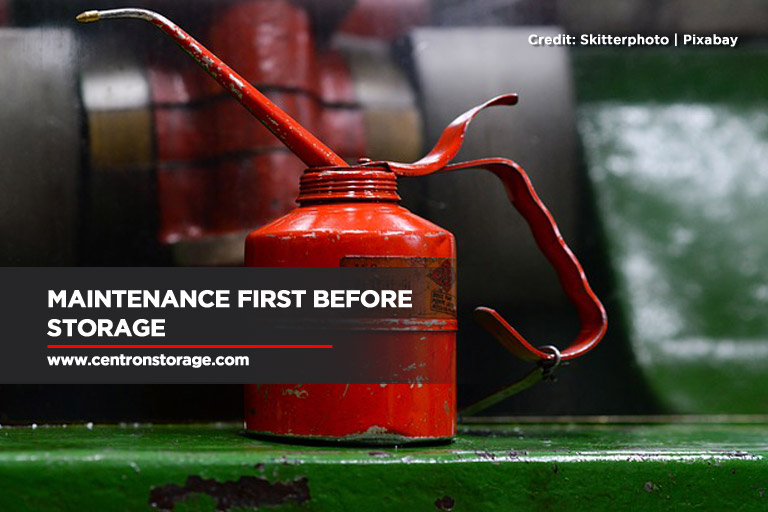
Dust, debris, and moisture build-up can cause mechanical and electrical failure. So before you store your power tools, make sure you clean them with a rag or old towel after every use.
- Check for Damage and Dispose of Defective Tools
This should be done regularly as part of maintenance. Since power tools are technically electrical devices, they should be checked for any damage before storage, especially if you’re not planning to use them for a while.
Components such as electrical cords must be inspected thoroughly for signs of wear and tear. If your power tools aren’t working, have them fixed or dispose of them if repairs are impossible. Moreover, throwing away defective equipment can help you free up more storage space.
- Make Sure Batteries Are in Good Condition
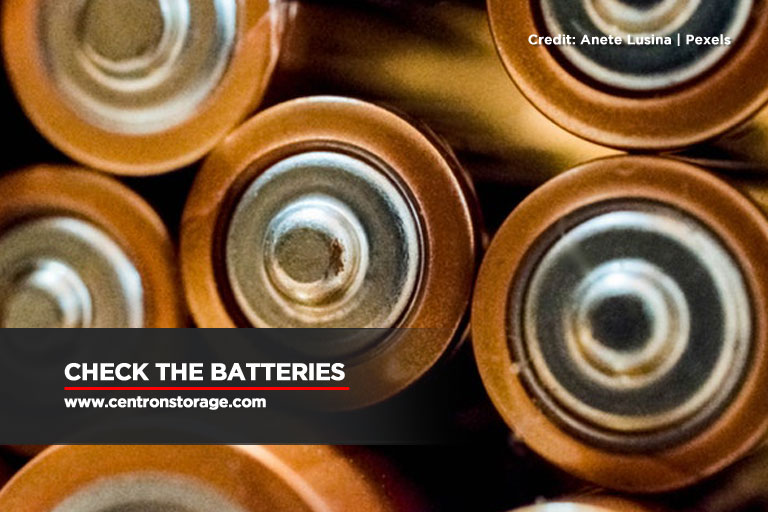
Cordless power tools rely on their batteries to function. Make sure to inspect those for any damage and replace them when needed before you store them. Moreover, be sure to clean your batteries with a cotton swab and alcohol.
When planning for long-term storage, some battery types such as the Nickel Metal Hydride (NiMH) and Nickel Cadmium (NiCd) on some power tools require a periodic discharge. So make sure to check the user’s manual for the correct charge and discharge procedures. However, with the newer lithium-ion batteries (Li-Ion), there’s less to worry about. Just make sure to store them with at least a 50% battery charge.
- Lubricate Your Power Tools
Lubricating your power tools helps prevent rust and ensures that moving parts
don’t get stuck and function as intended. Check the manual for each power tool for the areas to be lubricated as well as the type of lubricant to be used.
- Remove Rust From Your Tools
If your power tools such as drills show signs of rust, it is highly recommended that you must remove them right away. Rust tends to spread all over the tool with time and the corrosion and abrasion damage can cause parts to fail, freeze up, or cause structural damage.
Storage Solutions for Power Tools
Now that your power tools are properly prepared, it’s now time to store them. However, unlike standard, non-electrical hand tools, storage for electric-powered equipment requires careful consideration since certain elements can cause harm to the internal components.
Here are some effective ways to store your power tools:
1.Choose the Right Area for Storing Your tools
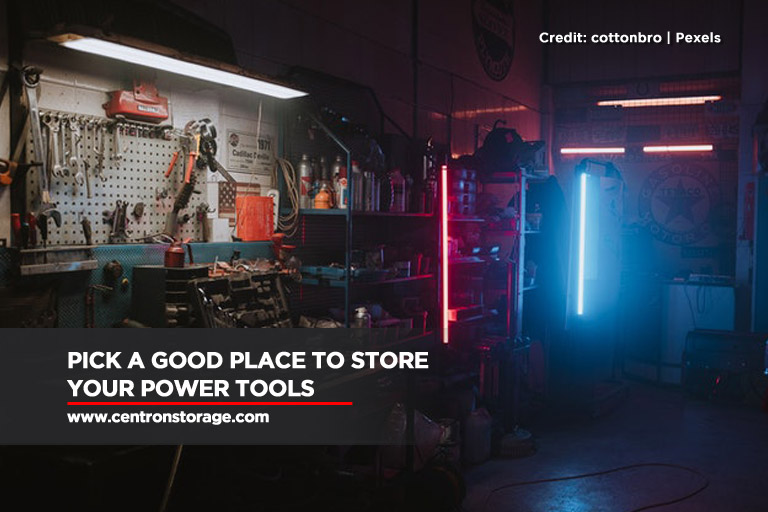
When choosing a dedicated area to store your power tools, one of your primary goals to reduce any negative environmental effects. This is crucial in protecting your equipment from the elements as well as mitigate any potential hazard to the residents.
Here are the things to consider when choosing a storage area for your power tools:
- An area with less exposure to sunlight and heat.
- Avoid areas with high relative humidity.
- Choose an area with low foot traffic to avoid people accidentally knocking over your power tools and cause injuries.
- A climate-controlled room is recommended.
As for suggestions on recommended areas to store your power tools, here are the following:
- The basement for power tools that are occasionally used in the house.
- The garage of power tools that are often used for automotive repairs.
- Opt for a self-storage unit for seasonally used power tools or if you don’t have enough space in your house.
- Have a dedicated tool shed built if you have enough space outside your house.
2.Keep them in a Power Tool Storage Cabinet
One of the best power tool storage systems is to store your equipment in a dedicated cabinet. You can either purchase one, have an existing cabinet repurposed, or have one built according to your specifications.
There are a couple of great benefits to keeping your power tools in their own cabinet:
- It helps keep your tools organized and secure.
- The cabinet doors help protect your tools from the elements as well as physical damage.
- Some power tool storage cabinets come with charging stations for your cordless equipment.
3.Place Your Equipment on Power Tool Storage Racks
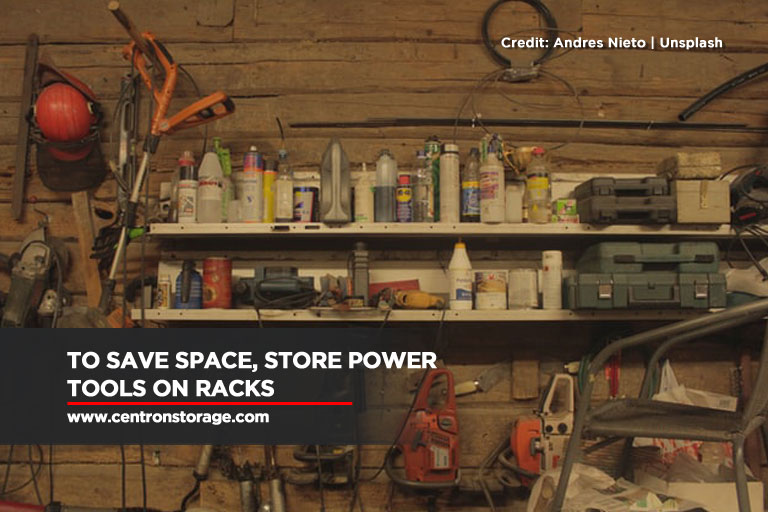
If you don’t have much space, then one of the smartest tool organizer ideas is to place your tools on storage racks. However, this only works if you only have a small collection of power tools.
Here are the benefits of this functional storage solution:
- They can be mounted on walls so they don’t occupy much floor space.
- The storage racks can be customized to accommodate charging outlets for batteries.
- Storage racks make it easier for you to spot your tools, eliminating the hassle of checking cabinets, boxes and drawers.
4.Use the Original Packaging.
Some power tools come packaged in boxes when you first buy them. Most people tend to throw these away, however, it is highly recommended that you don’t do that.
The original packaging is one of the best power tool storage boxes around. It has built-in internal supports that were designed to secure and protect an item from impact damage. If you’re planning to store your power too for the long term, it would make sense to put it back in the box it came in.
5.Hang Your Power Tools
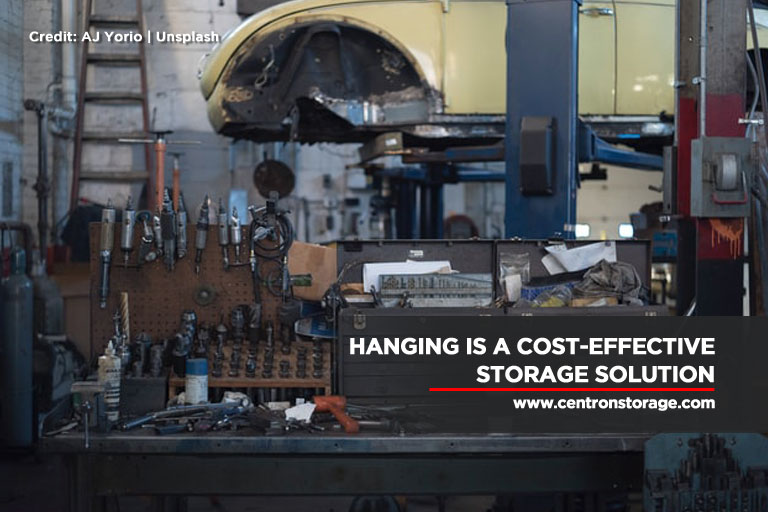
A cost-effective storage solution for your power tools is to hang them on pegs on walls or shelves. For best results, use a pegboard as a backing so you can easily position the pegs to accommodate and provide added support to larger power tools.
6.Store Power Tools Inside Clear Plastic Containers
Clear plastic containers are very versatile storage solutions and they’re one of the best places to keep your power tools, whether for the long term or the short term. These boxes have a wide range of benefits, such as:
- Plastic containers are more durable than standard cardboard boxes.
- Most clear plastic boxes come with lids, so they keep dust and debris away from your equipment.
- Plastic containers are resistant to most liquids, so your power tolls are safe from accidental spills.
- Clear Plastic boxes make it easier for you to find your power tools.
Properly storing your power tools is essential to extending their lifespan and keeping them functional. By following the storage solutions stated above, you will be able to ensure that your equipment is safe from harmful elements and physical damage.
If you’re looking for an excellent storage solution for your power tools in the North York area, contact Centron Self Storage at (647) 749-1396. We offer great deals and will be happy to provide you with the best service possible.
8 Useful Tips for Storing Glassware and Chinaware
When it comes to storing your belongings, you know that some items break easier than others — glassware and chinaware, for example. In addition to being extremely fragile, these items can be quite expensive, specifically fine china and wine glasses.
You can’t just stuff china and glass in a box somewhere and call it a day; they require a more delicate approach to both handling and storing. If you want to properly preserve these valuable objects, you can benefit from learning some of the best ways to store glassware and chinaware.
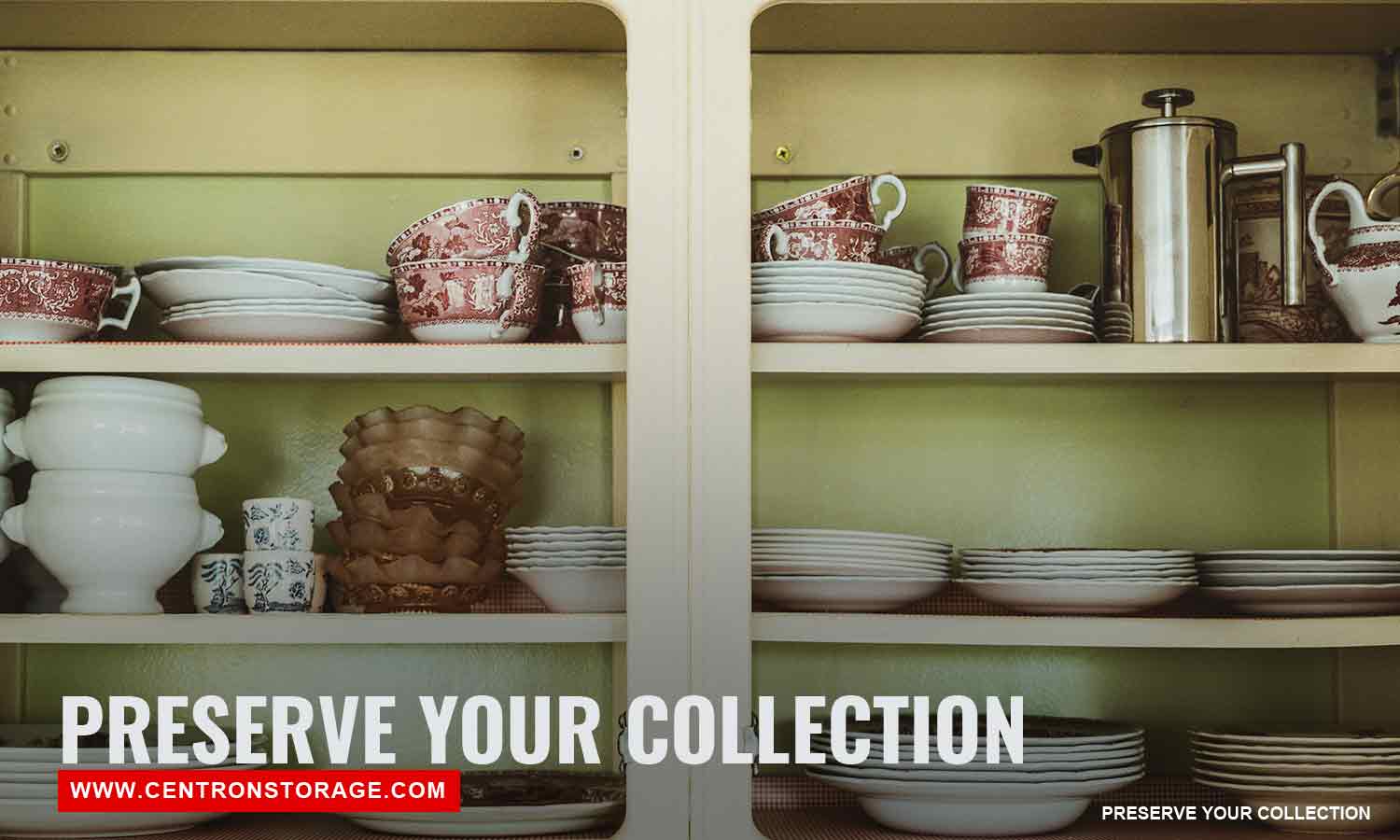
Chinaware is made of a fine white or translucent vitrified ceramic material. It takes its name from China, the country where it was originally created over 11,000 years ago. It comes in the following varieties:
- China
- Porcelain
- Bone china
- Ceramics
- Earthenware
- Stoneware
Closely associated with fine dining, chinaware is often reserved for special occasions, while some are used purely for decorative purposes. Because of this, households with a set (or two) of china keep them in storage nearly the whole year round.
Glassware, on the other hand, is considered a cheaper alternative to ceramics. These are easier to make and come in a variety of stylish designs that make them extremely popular among the public. However, they are equally fragile and need the same amount of tender loving care.
How to Care for Glassware and Chinaware in Storage
Similar to storing antiques, proper chinaware and glassware storage is essential if you want to protect them from physical damage and prevent deterioration. By following these simple tips, you will be able to keep your fragile dinnerware pieces in good condition, even if you’re storing them in the long term
Decide what to keep and what to store
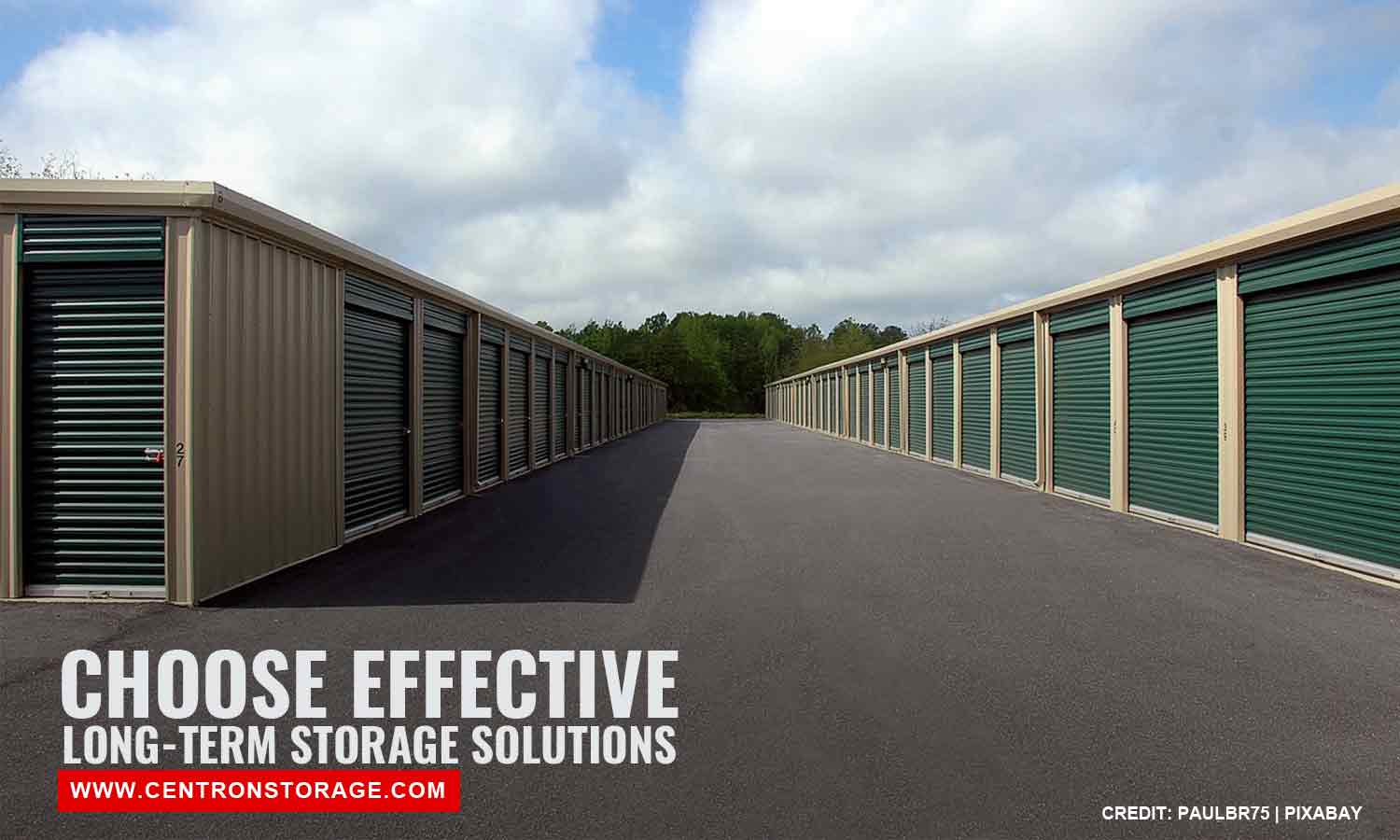
Before you start putting your chinaware and glassware into their respective storage containers, the first thing you should do is ascertain how frequently you use them.
Frequently used tableware should be stored neatly in cupboards and kitchen cabinets for easy access. A more elegant option would be to use a display cabinet which allows you to show off your collection and add vibrance and style to the dining room.
For those that you only use on special occasions and events, store them in a safe place in the attic or basement. Alternatively, you can turn to a reliable storage centre for safekeeping.
Wrap them individually

Even when inside a storage container, glassware and chinaware are still at risk of physical damage when handling. Pieces are likely to bump into the sides of the containers or each other when you move the box from one place to another and acquire damage including:
- Scratches on the surface of plates and sides of the wine glasses
- Chips on the rims of the drinking glasses and the edges of the plates
- Hairline cracks on the sides of glassware
Wrapping glassware and chinaware individually will keep this from happening. That also means that pieces, such as teapots and serving bowls, should be wrapped separately from their lids. Additionally, you should fill the insides of glasses with wrapping material to prevent breakage.
When choosing wrapping material, opt for the variety that can provide adequate protection, like:
- Bubblewrap – This provides the best protection due to it’s cushioning properties which makes it perfect for fine china and expensive glassware.
- Paper towels – These provide excellent cushioning.
- Standard wrapping paper – This is a great all overall solution and is easily available.
A word of caution: under any circumstances, do not use newspapers as substitutes for wrapping materials. The ink on these publications can leave stains which are next to impossible to remove without causing additional damage.
Use cardboard dividers — they’re your friends!
Another great way to keep your drinking glasses and china cups secure inside a container is to use cardboard dividers. These serve as partitions to separate and protect boxed items during storage or shipping.
Cell dividers are the most popular type of cardboard dividers and can be easily obtained at your local supermarket or online. They also work together with wrapping paper or bubble wrap, further enhancing the protective layer around your fragile tableware.
Make sure the box is fully secure
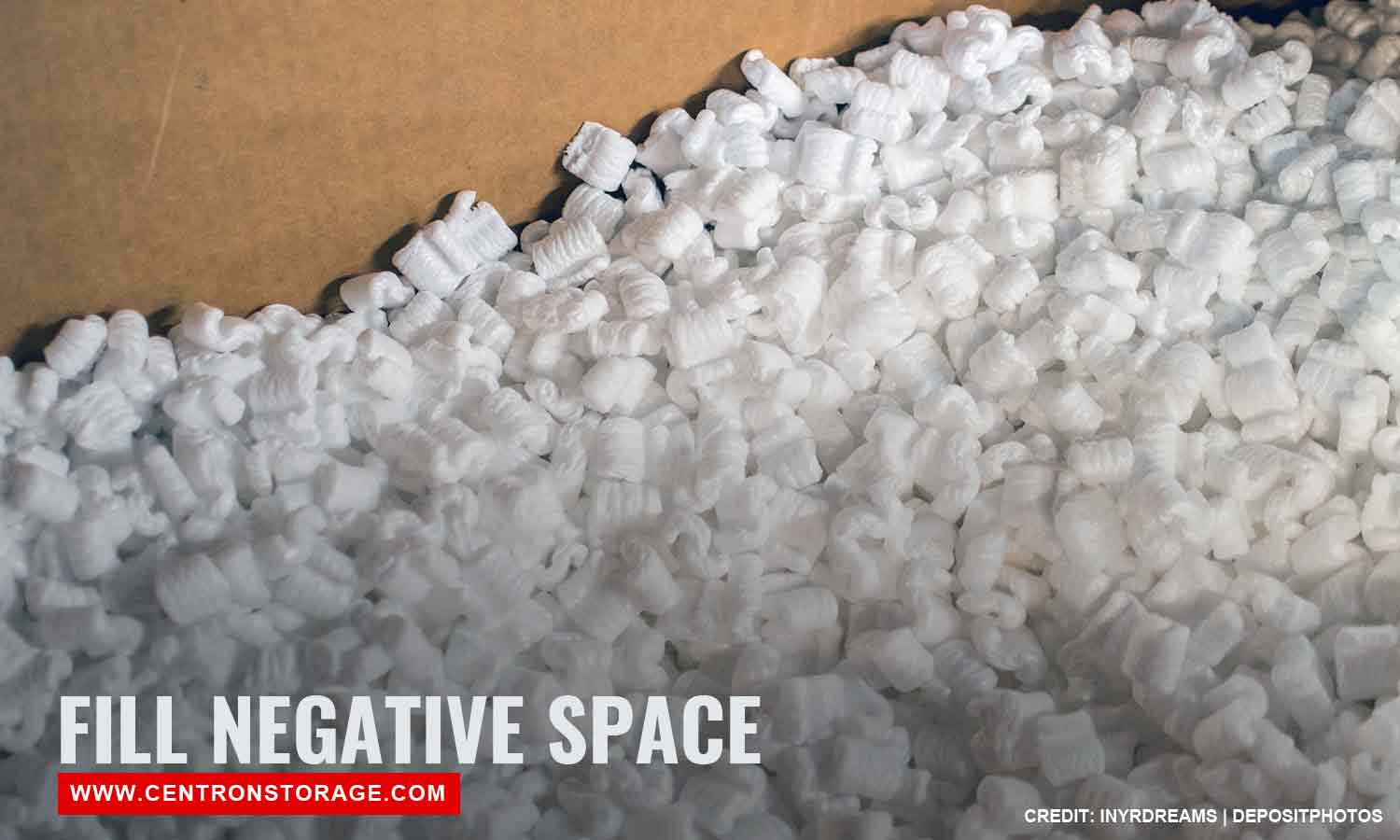
Even with wrappings and dividers in place, there’s still a high likelihood of your chinaware and glassware moving around because of the negative space between the divider and items. Before you seel the container, fill up these vacant areas to keep movement to a minimum, securing your items.
Effective filler options include:
- Packing peanuts
- Cushion foam
- Packing paper
- Bubble wrap
Opt for smaller plastic storage bins for heavier objects
It’s a standard storage practice to keep heavy items in smaller packages. Despite its fragile nature, china can be quite heavy.
Plastic storage bins are great chinaware storage containers, particularly if you have the wrapping in place. They’re considerably more durable than cardboard and highly resistant to most contaminants, such as dust and dirt.
Label your boxes
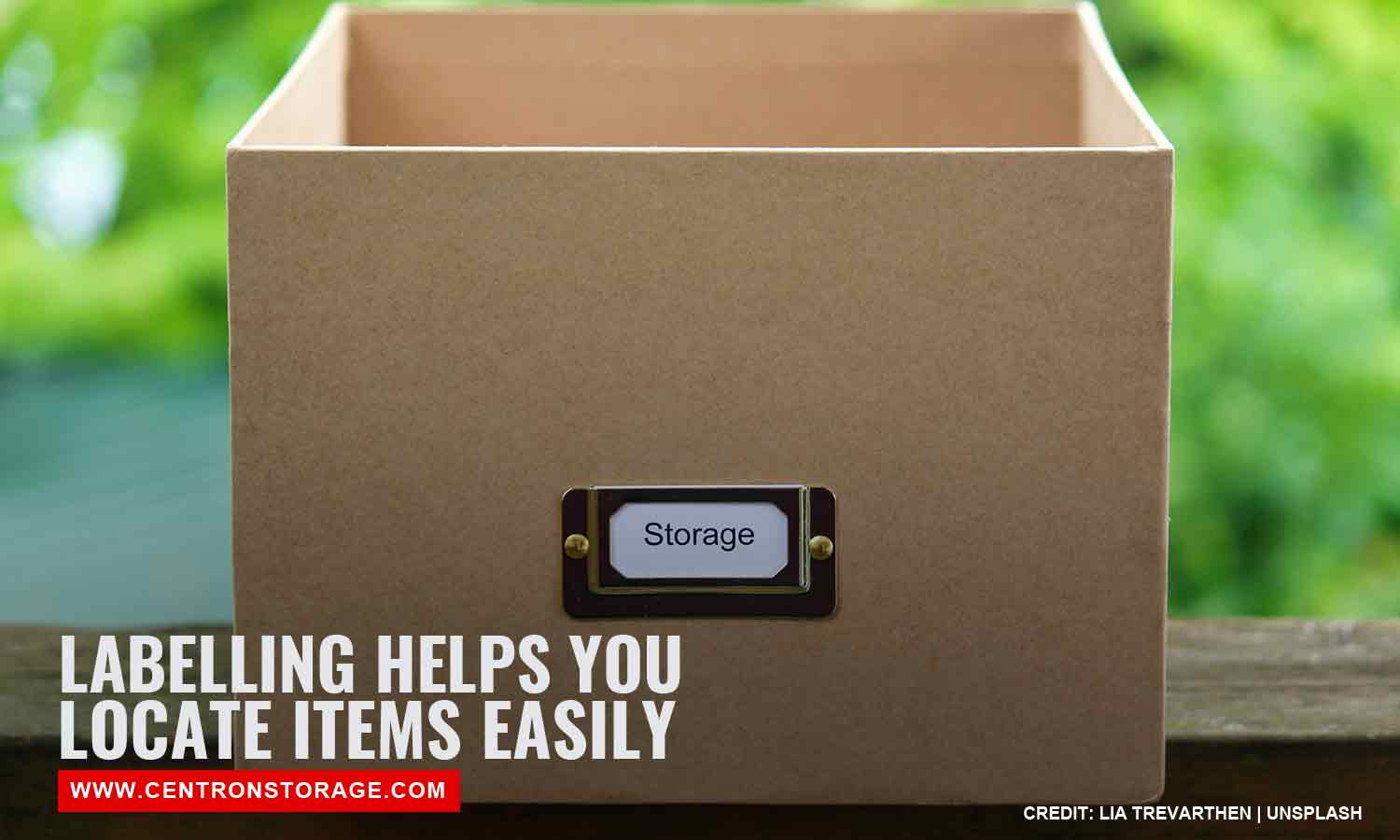
Unless you have x-ray vision, you’ll never find out what’s inside a box without opening it. Labelling your cardboard and plastic containers will is a great solution for this dilemma.
Not only does labelling help you find your chinaware and glassware faster, it also serves as a reminder to handle the boxes with care.
Avoid stacking boxes on top of each other
One common glassware storage container that people use are cardboard boxes. While there’s nothing wrong with that, people tend to stack these boxes on top of each other. Doing so places a significant amount of pressure on the items at the bottom. If fragile tableware ends up at the bottom of a pile, they can cave under the load and break.
If you want your chinaware and glassware to stay in one piece, do not use cardboard boxes to store them in and place them at the top.
Store in an area with consistent temperature
Constant shifts in temperature can be harmful to your china and glass items. Storing them in areas with extreme temperatures and humidity will cause them to crack.
Always take the temperature of the storage area into consideration when storing glassware and chinaware.
When packing and storing delicate dinnerware, it is important to take your time and go through each step carefully. By following proper storage methods, you’ll be able to reduce the risk of damaging them and ensuring that you can still use them the next time you have a special event.
If you’re looking for an excellent storage solution for your glassware and chinaware in the North York area, contact Centron Self Storage at (647) 749-1396. We offer great deals and will be happy to provide you the best service possible.
8 Self-Storage Myths Debunked
Self-storage units have provided many a convenient place to store those extra items in the house without getting rid of them. Furthermore, there are other benefits that you can get from the service such as reduced clutter at home and a wider living space.
However, there is a reasonable number of misconceptions regarding storage units flying around out there. Unfortunately, these myths can either dissuade you from using the service or urge you to use self-storage rooms for the wrong reasons. A good number of these misconceptions are propagated by people who may have preconceived notions though they probably have never tried renting one before. Falsehoods can also come from people who had an unfortunate experience with the service.
Before you believe anything they say, have a look at these common myths about self-storage and the actual facts:
Self-Storage Units Are Not Burglar Proof
This is a common misconception spread around by skeptics who believe that there are no secure self-storage units and that your belongings are probably going to end up stolen.
In reality, self-storage centres are more secure than you think. Since some tenants store extremely valuable materials such as antiques, and important documents, these facilities are fully outfitted with the latest anti-theft equipment.
Examples of security measures found in self-storage facilities are the following:
- Computer-controlled access terminals which require a personalized identification code to gain entry
- Surveillance cameras strategically placed in key areas
- Daily inspections conducted by security personnel
- Personalized lock and key provided to tenants
You Can Store Anything Inside a Storage Unit
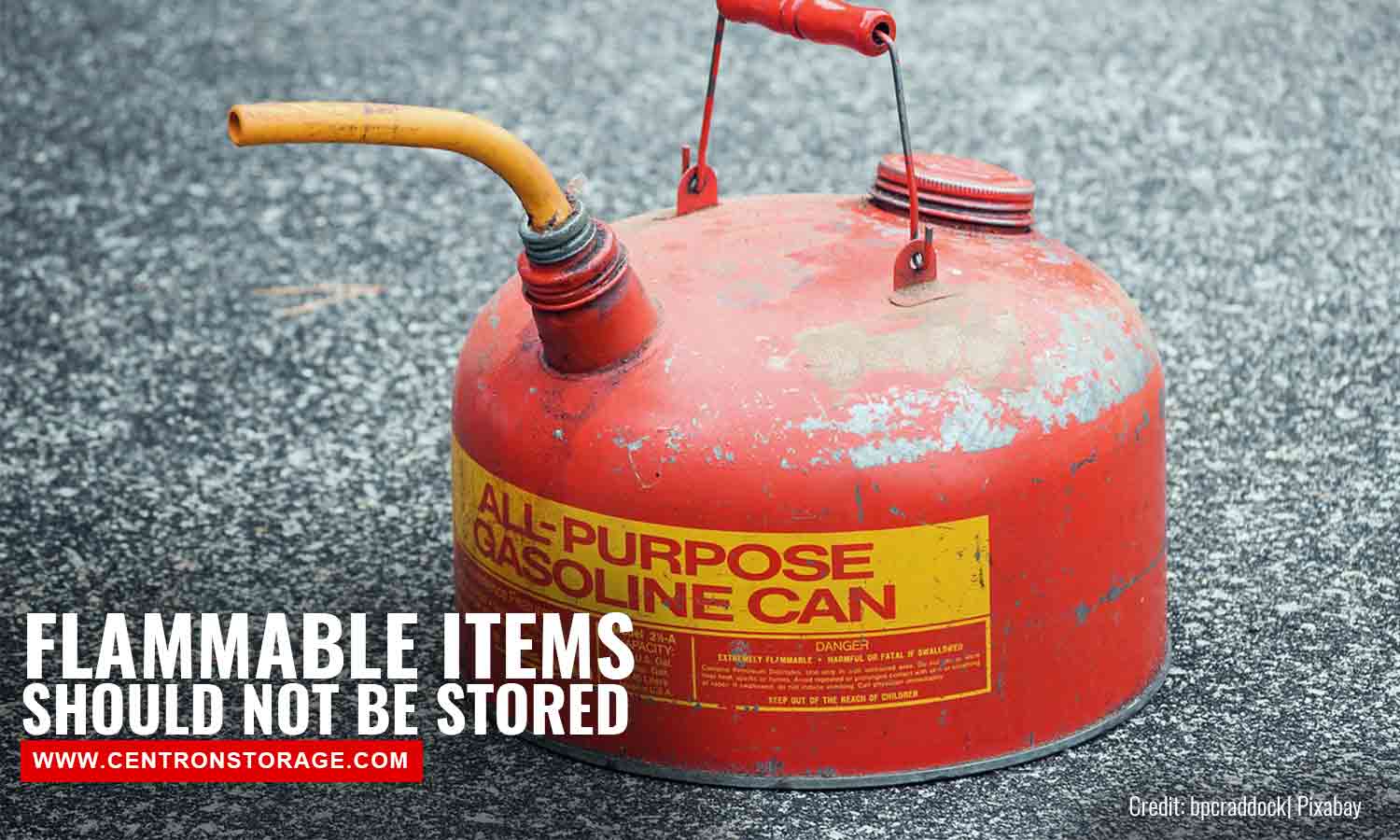
Certain Hollywood movies and media have propagated the idea that you can store anything in a storage unit. However, this is not the case. Although it is true that you can store a wide variety of items, there are certain things that you cannot and should never place in a storage unit. Be sure to check the storage guidelines for more information.
The items listed below can endanger your stored items as well as the other storage units inside the facility:
- Perishable goods, such as food and beverages
- Animals, insects, and plant life
- Flammable items such as fuel, paints, oil and solvents
- Chemicals and biological agents, such as toxic waste, asbestos, and acids
- Stolen property and contraband
Only Hoarders Use Self Storage Units
Reality TV shows featuring hoarders and storage buyers have really blown the popularity of this myth out of proportion. It’s true that some storage units are used by real-life hoarders to store excess stuff that will not fit in their homes, but that doesn’t mean that the average person doesn’t use them.
People use storage units for a variety of reasons such as:
- Storing decorations for seasonal holidays like Christmas
- Keeping household or office items temporarily while moving to a new location
- Storing furniture and equipment while the house, office, or building is undergoing renovations
- Housing vehicles that are not currently in use
- Stocking old documents and excess business inventory
Self-Storage Facilities Only Offer Storage Space and Nothing Else
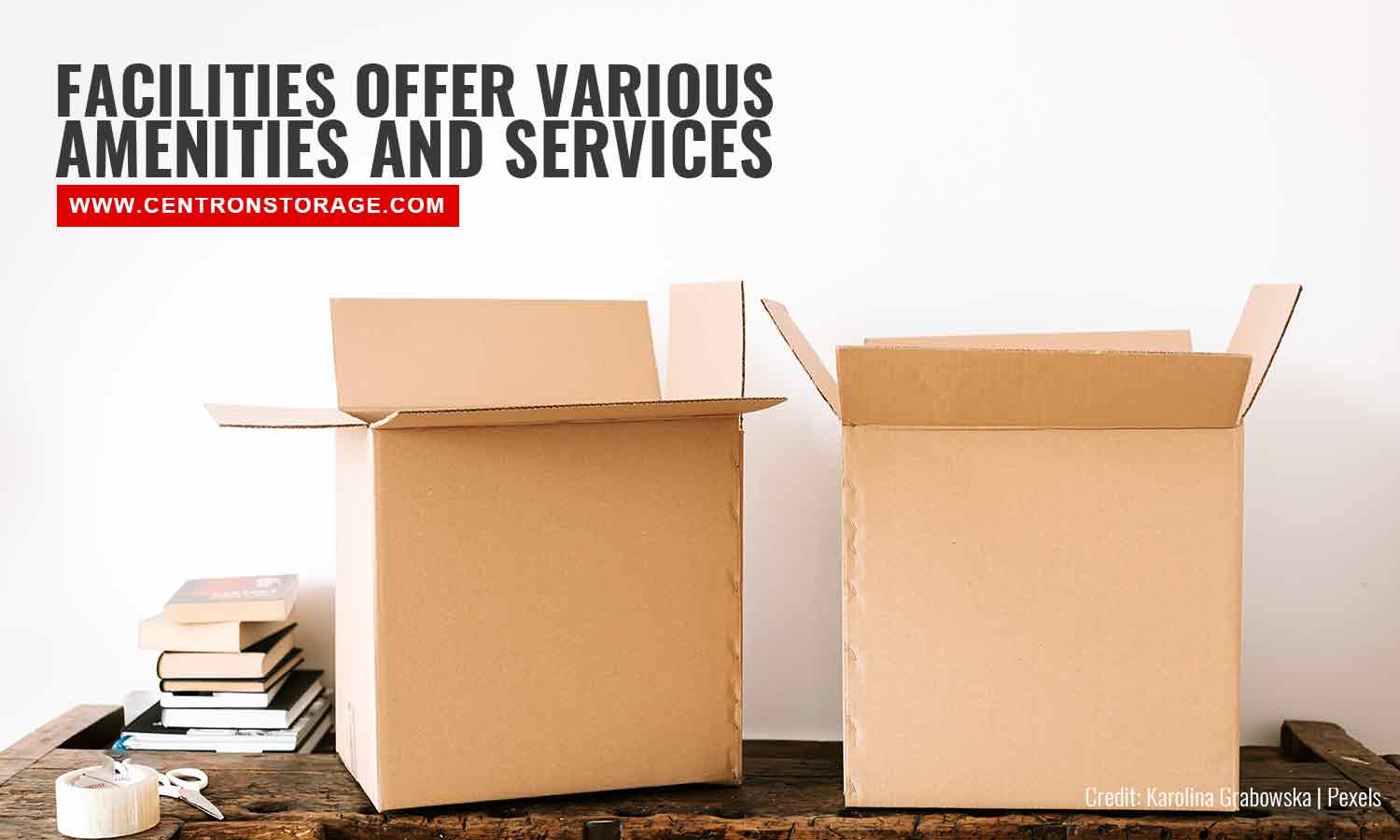
This is another common misconception that overly simplifies the nature of the self-storage industry. In fact, this often convinces some people to avoid the service outright and just opt for the usual methods, like storing items in their basement or attic.
While offering storage space is their main line of business, storage facilities also offer other services that help tenants get the most out of the experience:
- Reputable storage facilities offer high quality packing supplies to help tenants store their belongings.
- Staff will offer advice and assistance to their tenants on the best storage solution possible.
- Aside from packing supplies, these facilities also provide storage accessories such as specialty gloves, a
- wide variety of locks, and other types of storage equipment to help secure items.
- Specialized storage units and services are offered for keeping important documents and files.
Self-Storage Costs a Premium!

Many believe that renting a storage unit is a luxury meant only for those who are well-off. Sometimes, Reality TV shows depict priceless antiques, paintings, and cars kept in storage units, further reinforcing the myth.
Self-storage is for everyone, regardless of monetary wealth or status. Units do not necessarily cost an exorbitant amount of money — even long-term. There are affordable storage locker options for people on a budget.
Moreover, you can save money with these few tips:
Consider the size of the storage unit before renting. Storage units come in different sizes with corresponding rates. So that means the more space it has, the more expensive it is. Be sure to choose the unit with enough space to fit your items and take them out with ease. This way, you avoid paying extra for space you won’t use.
Determine what kind of features you need. There are storage units that have certain features such as climate and temperature control for more sensitive items. There are also some that are specifically designed for documents and files. These types of rooms can cost higher than the average locker. If you don’t need all these extra features for your items, don’t go for them.
Self -Storage Units Require a Long-Term Lease
Whenever the word “storage” comes to mind, most people would often think of “long-term”, leading many to believe that self-storage units require a 6-month contract.
However, storage companies offer more flexible options for their tenants who only need the space short-term. The shortest lease period available is 1 month, which is the standard in the industry. You don’t have to worry about having to sign up for the long haul if you don’t need to.
People Can Live and Sleep Inside a Storage Unit
This is one of the more bizarre myths out there. However, the answer is a big resounding “no”. People cannot live or sleep in a self-storage unit.
A storage unit is specifically designed for storing items while keeping outside elements such as dust, dirt, water, and sunlight from affecting the things inside. This means there are no windows and the room is completely sealed. It is not a conducive or safe living space.
Storage Lockers Are Dirty and Disgusting
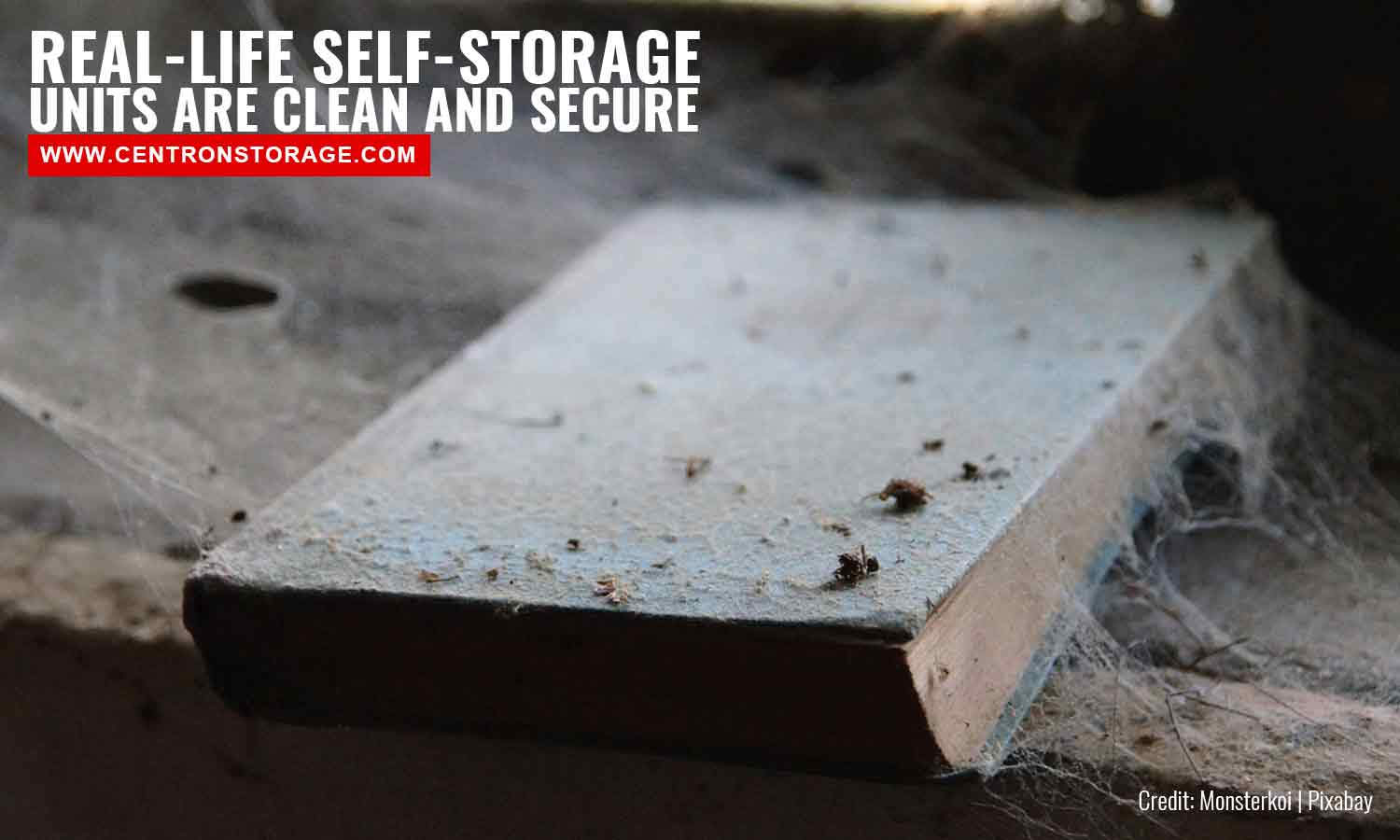
This is yet another myth perpetuated by Hollywood movies and other media. In those movies, self-storage units are depicted as dusty, dirty and filled with cobwebs. Sometimes, you can even see rats inside.
Fortunately, this is nothing more than a blatant lie. Reliable storage facilities are specifically designed to keep pests and dust at bay. They follow preventive measures to keep your items safe from the elements and from any damage.
Misinformation is rampant — and self-storage units are among its many victims. However, to take full advantage of the available amenities of modern life, it’s a good idea to start by discarding inaccurate notions. Self-storage is a convenient, effective, and affordable solution you can turn to when you need extra space for a variety of items.
If you’re looking for an excellent storage solution in the North York area, contact Centron Self Storage at (647) 749-1396. We offer great deals and will be happy to provide you the best service possible.

